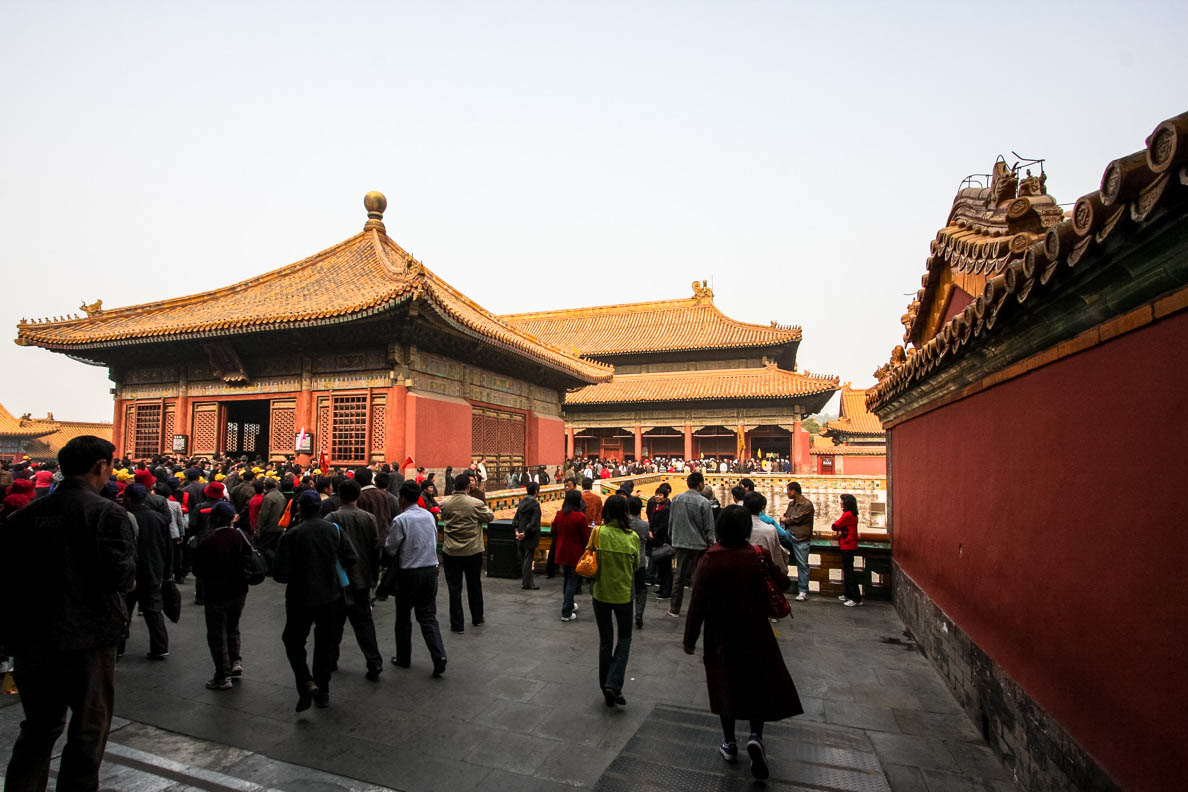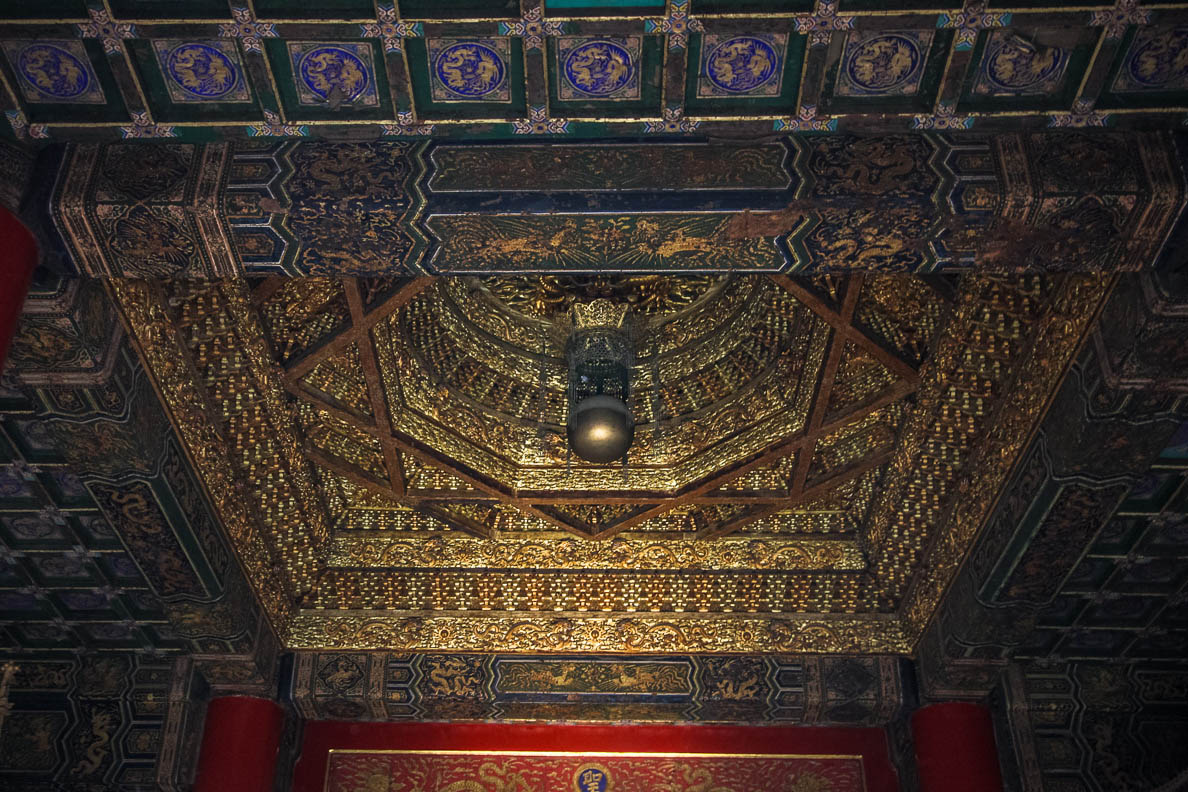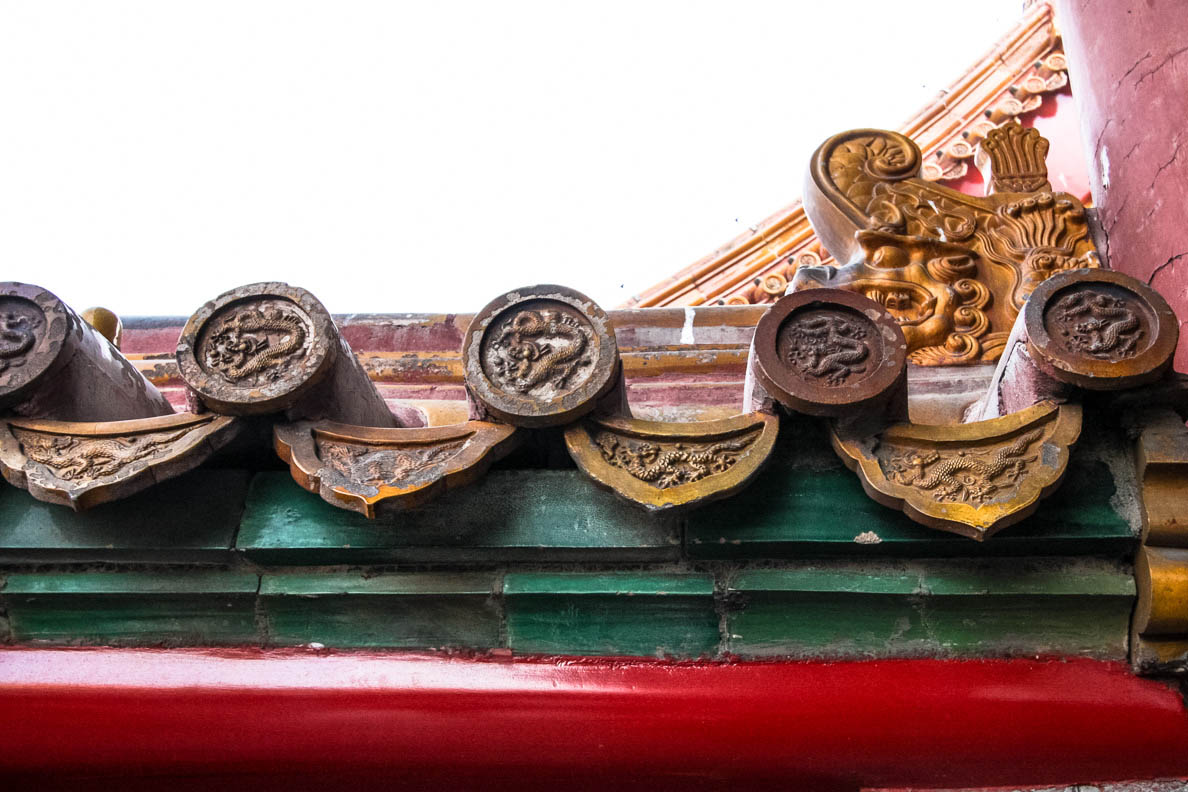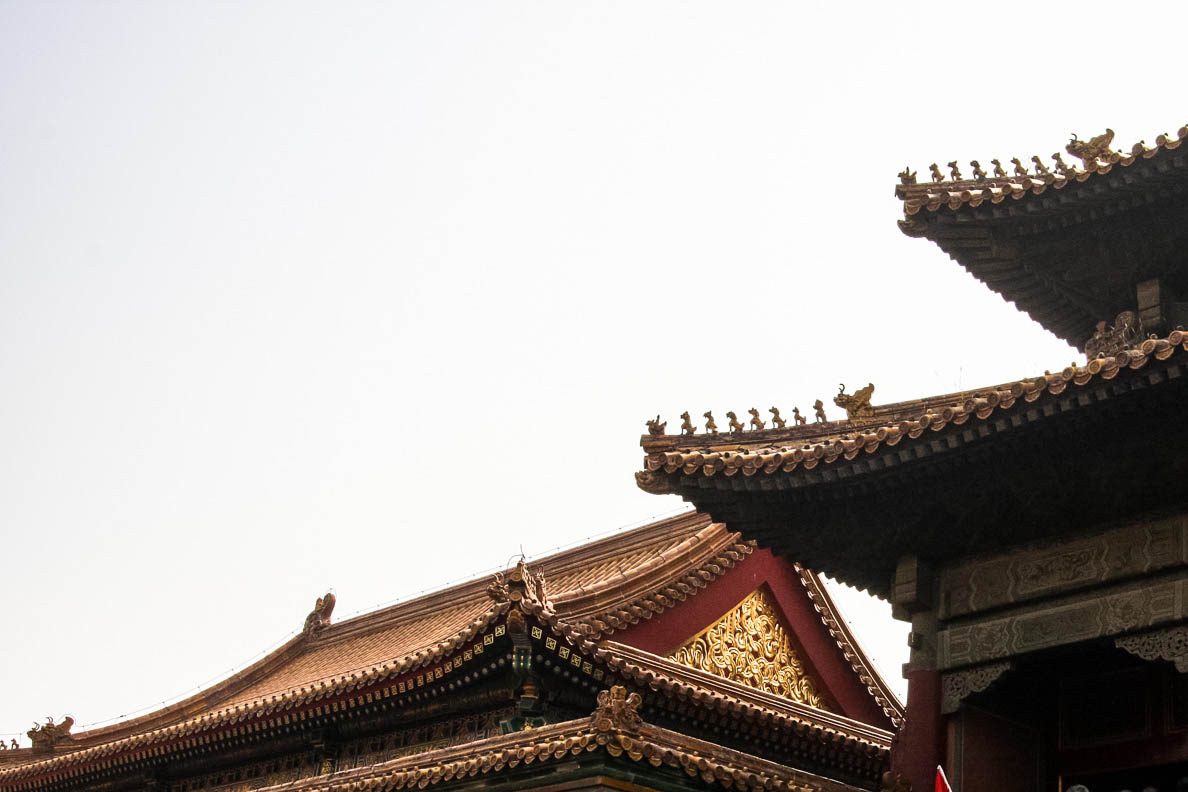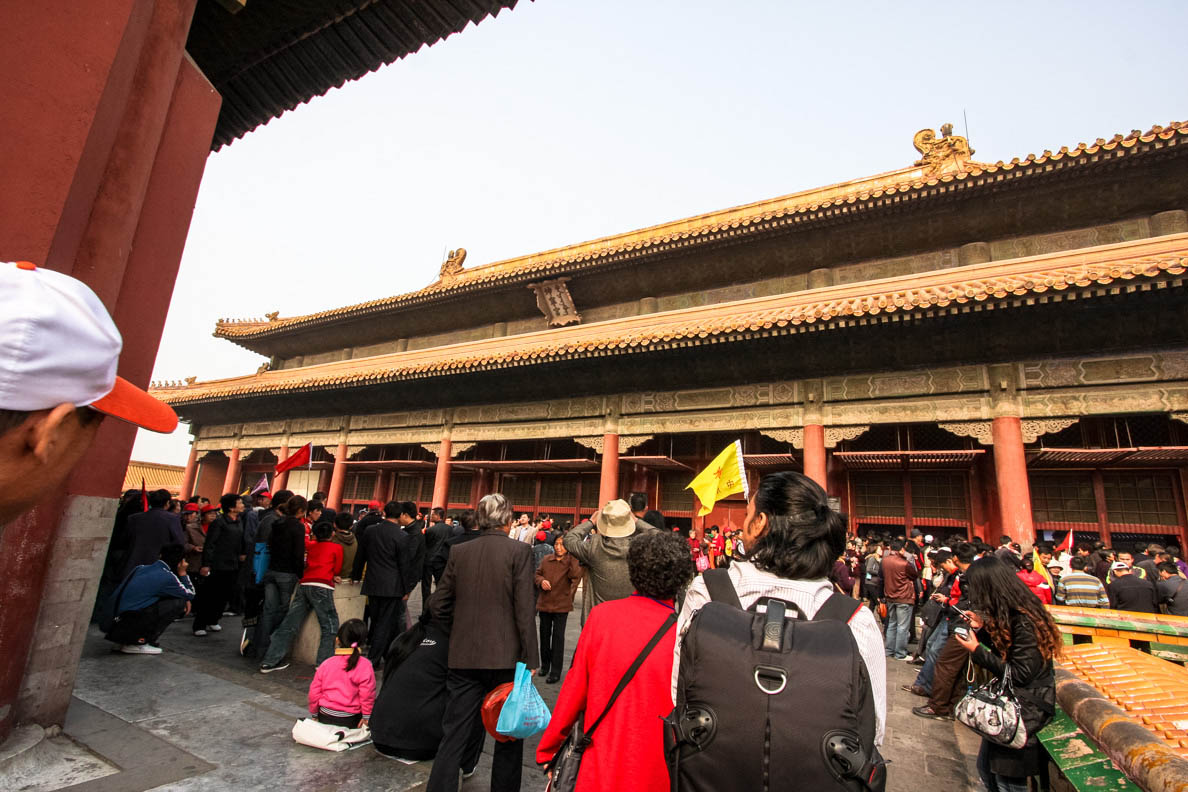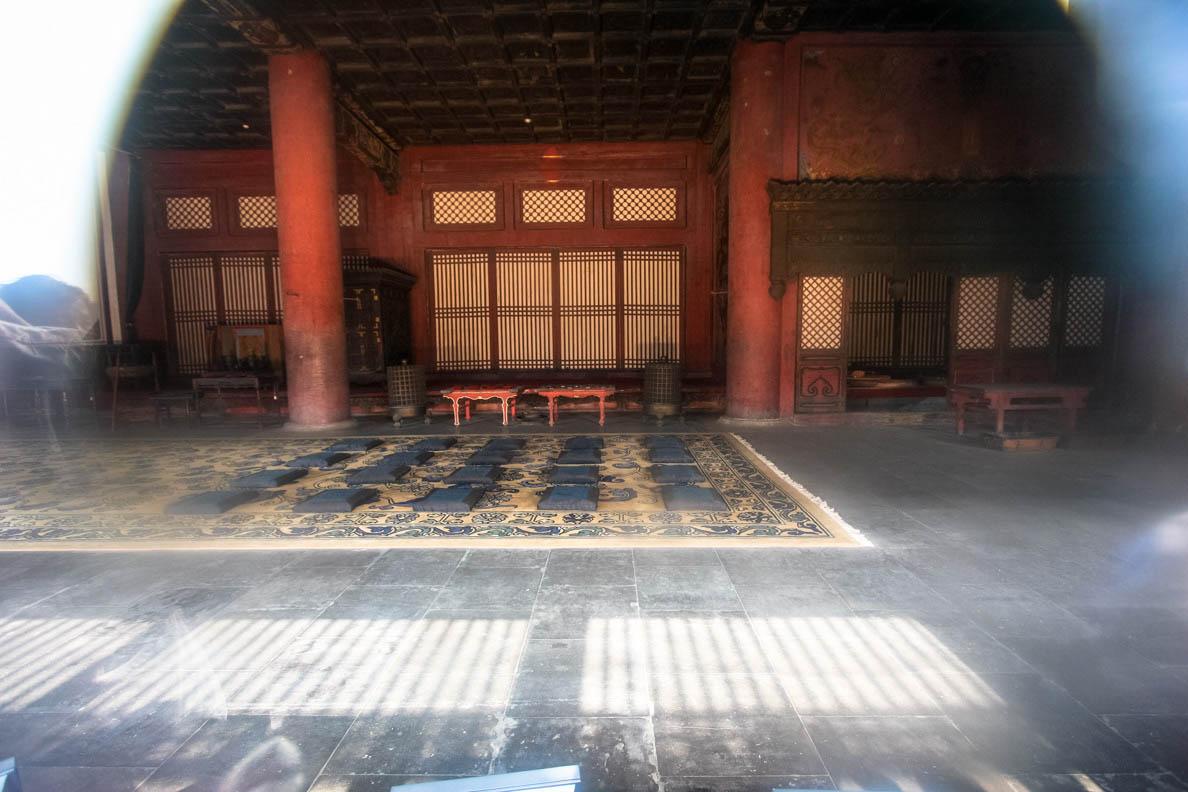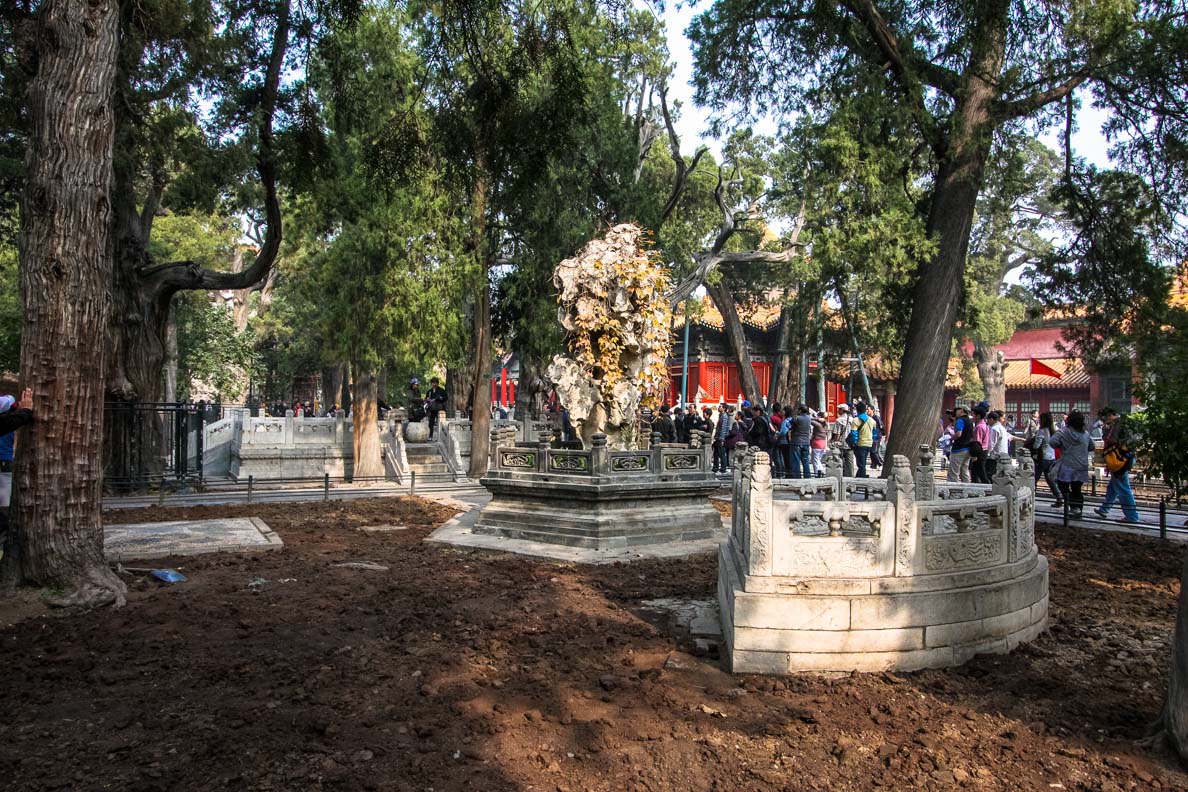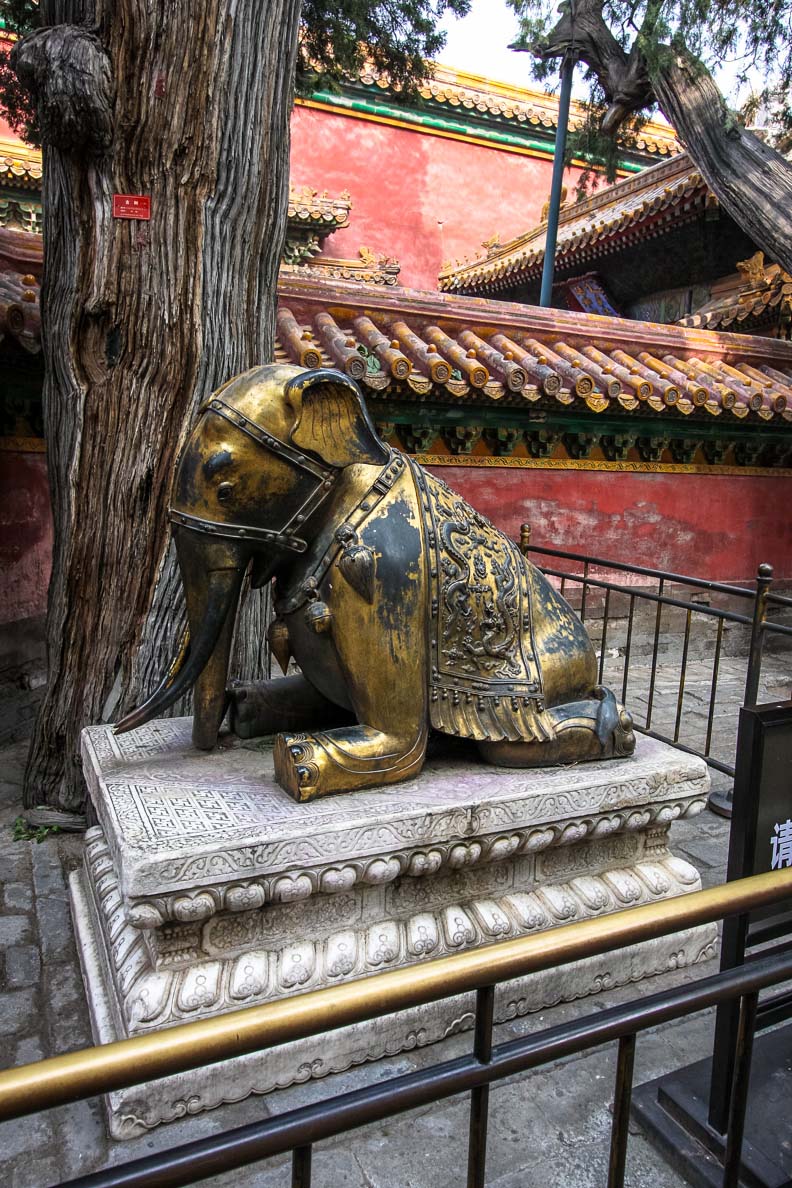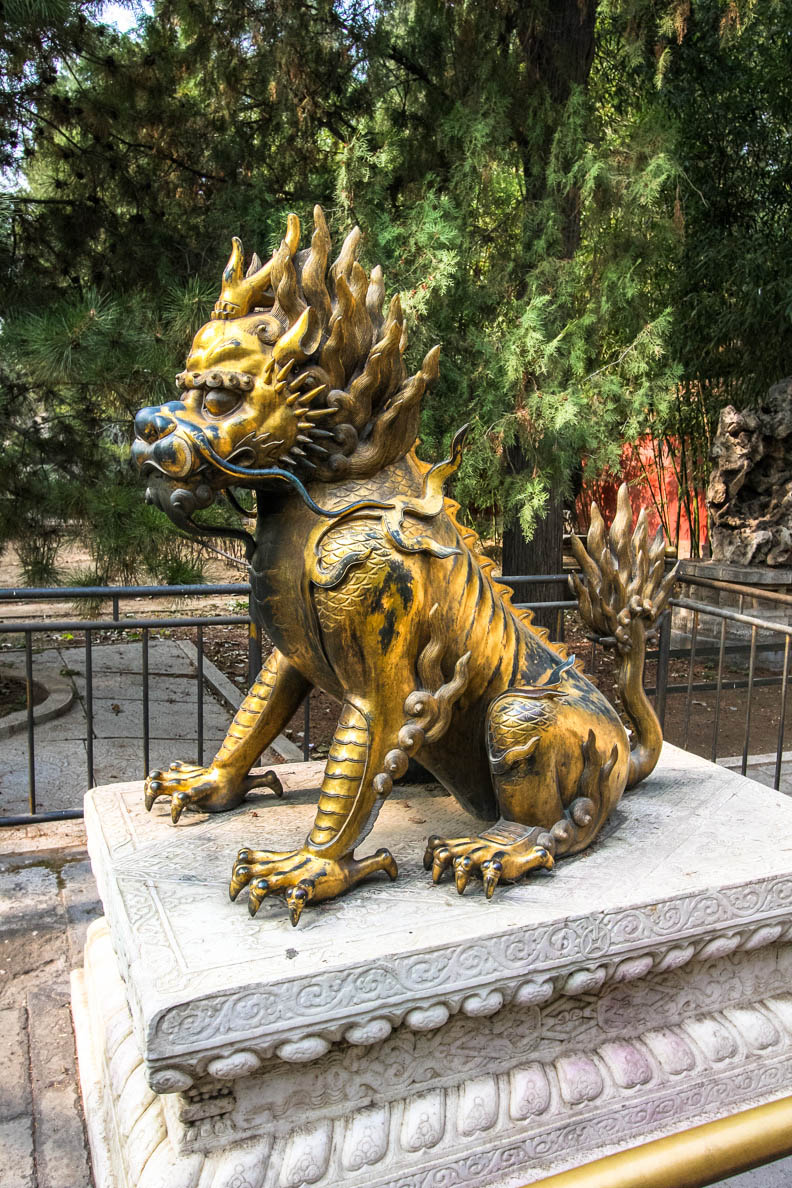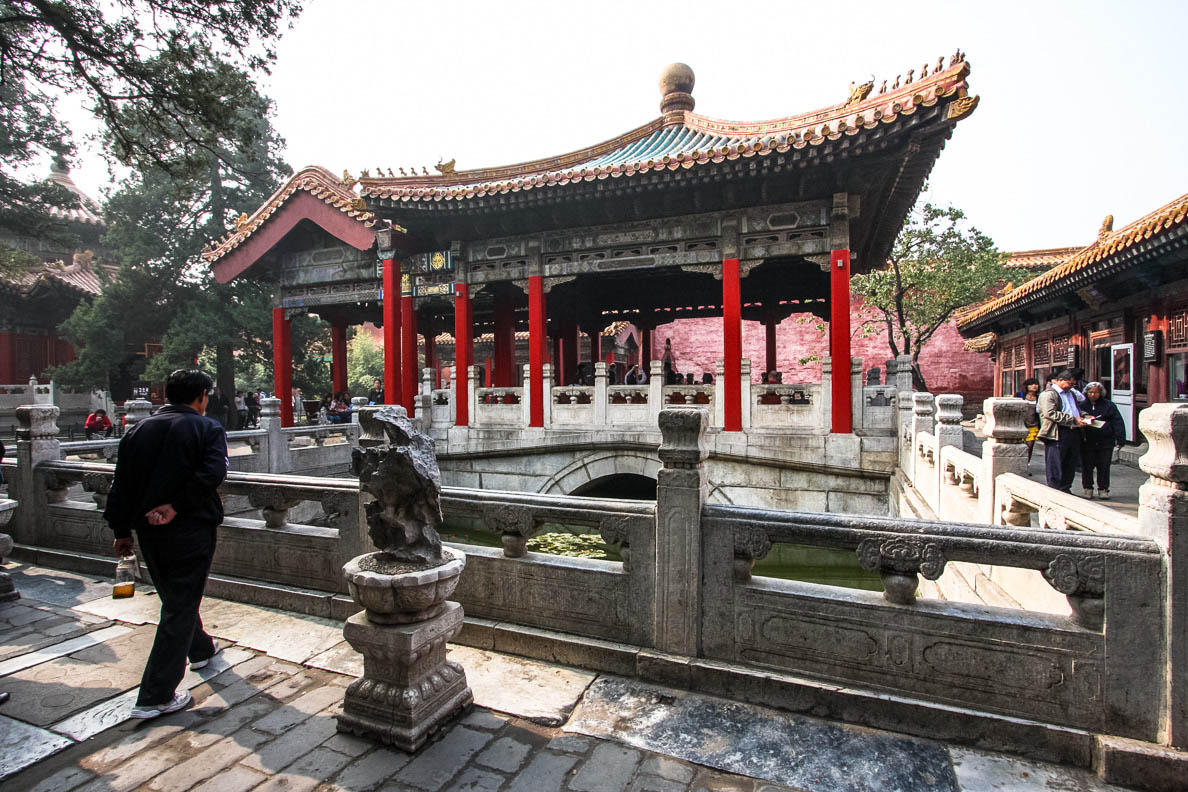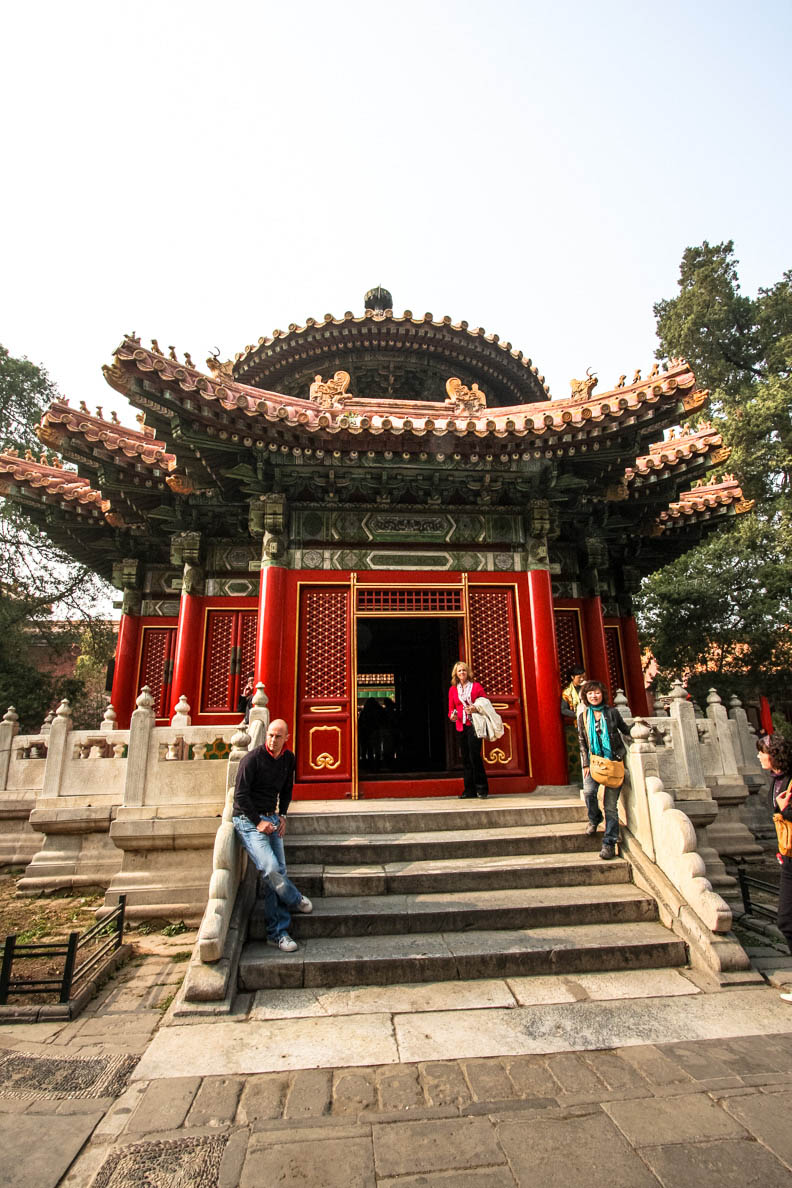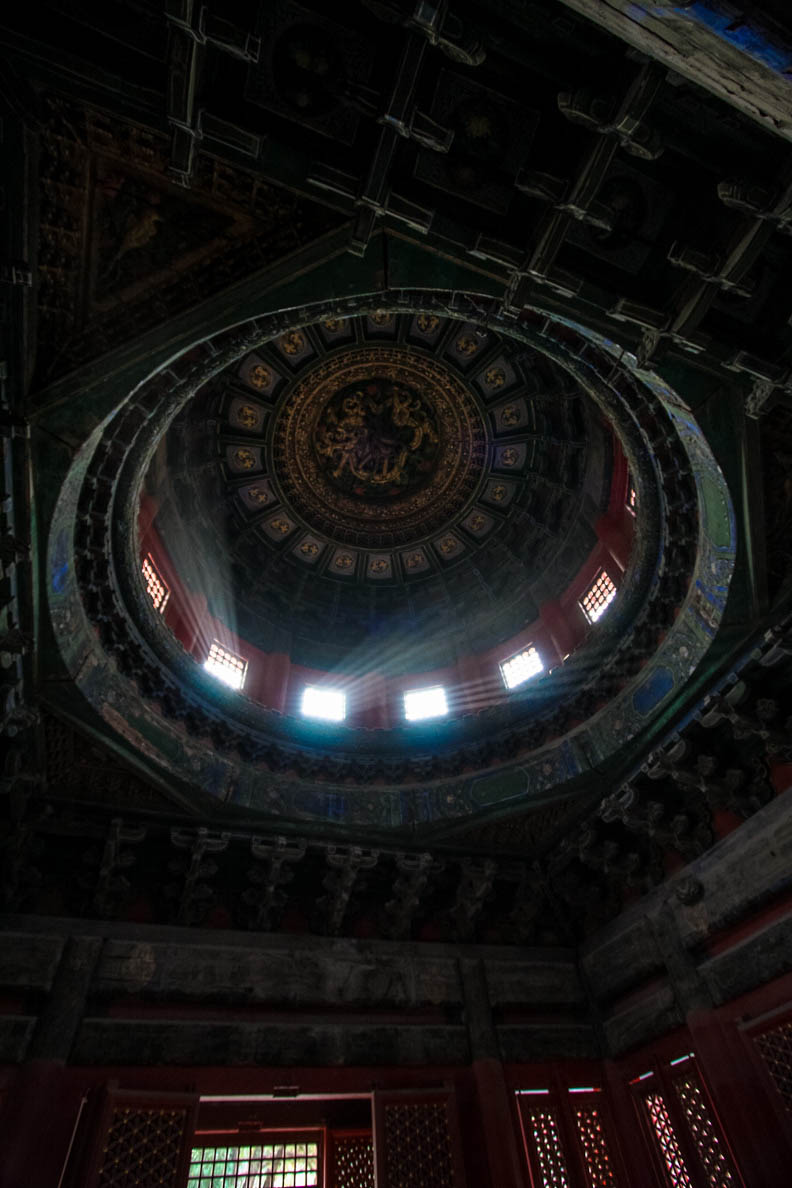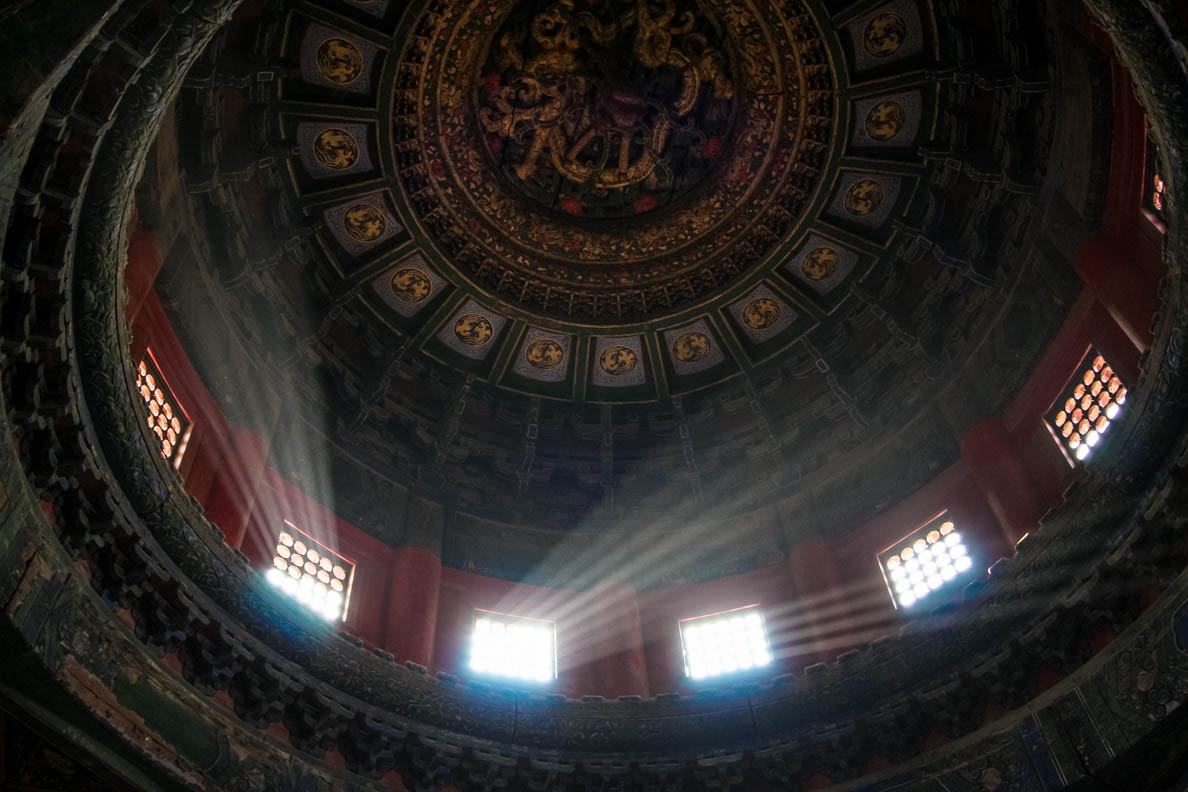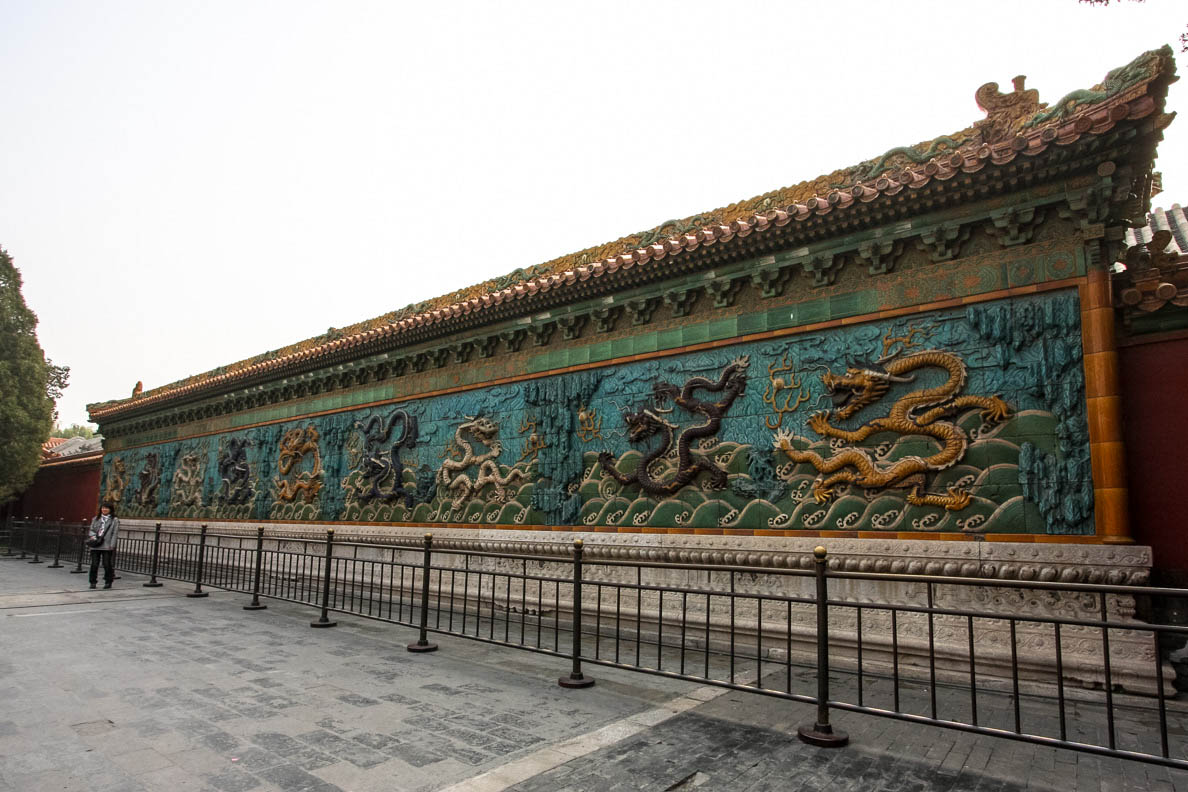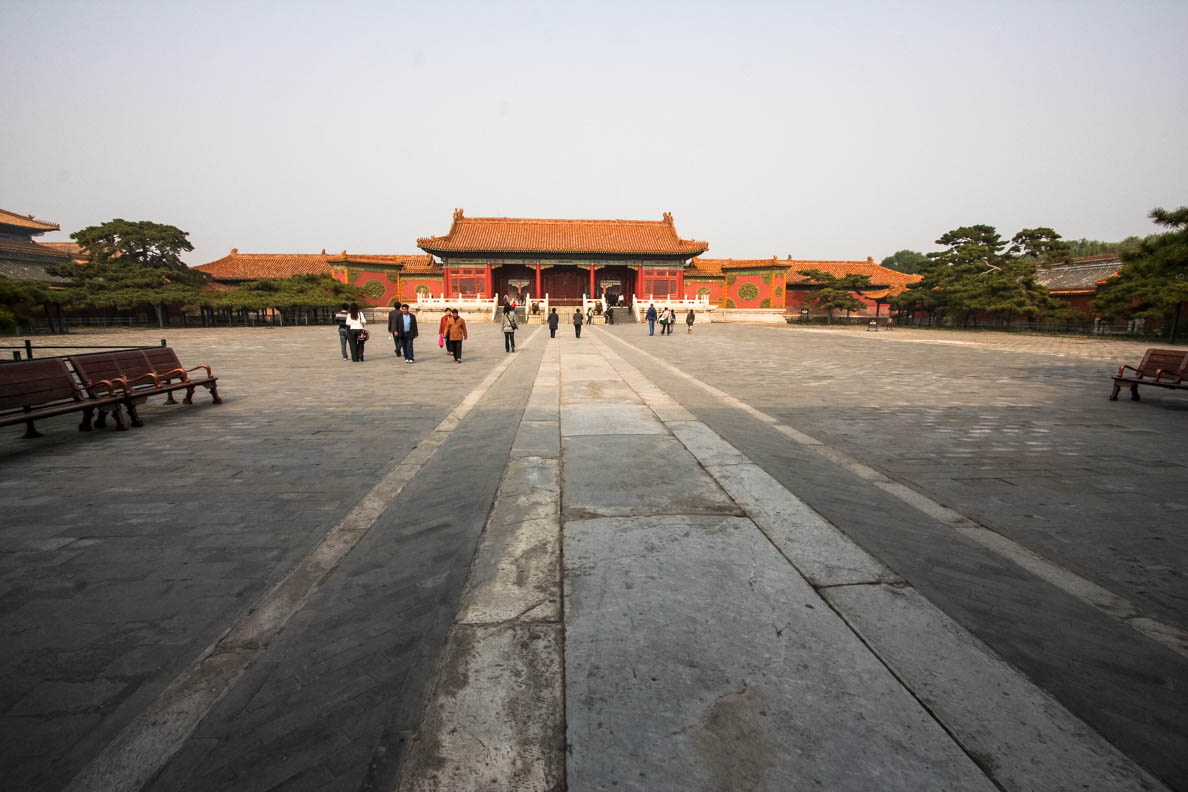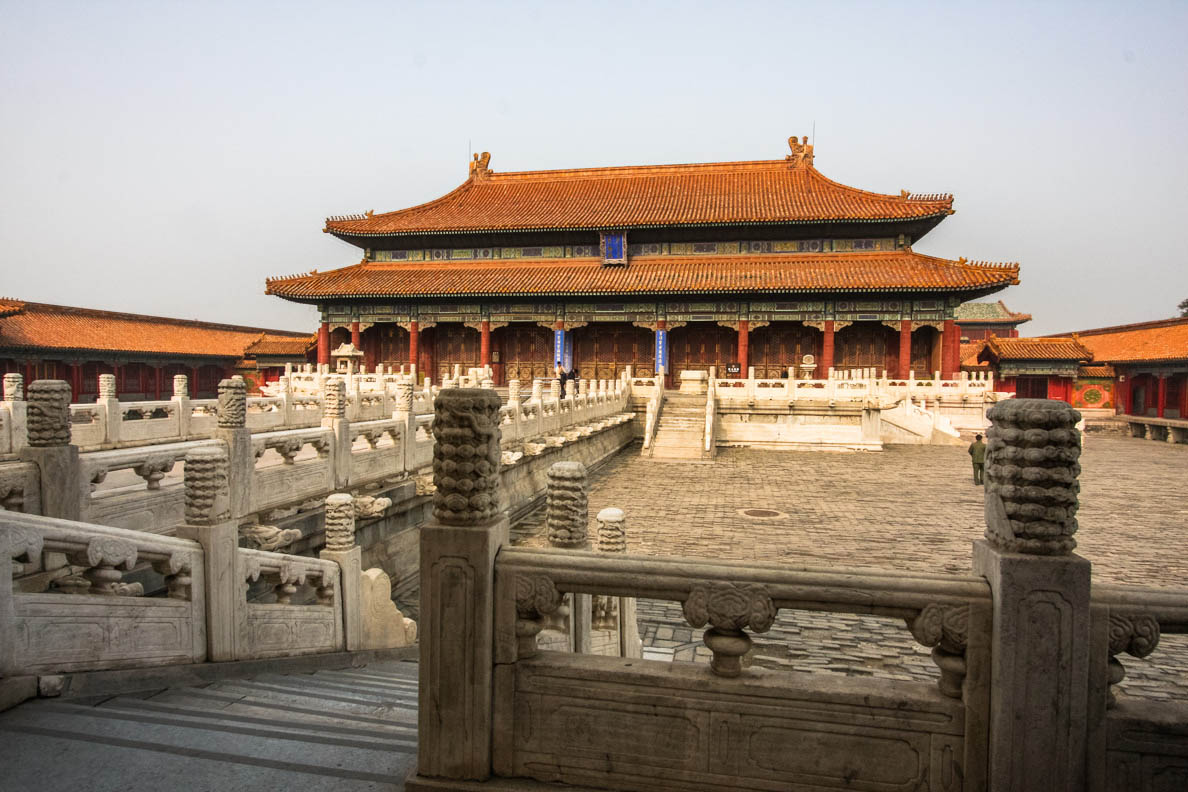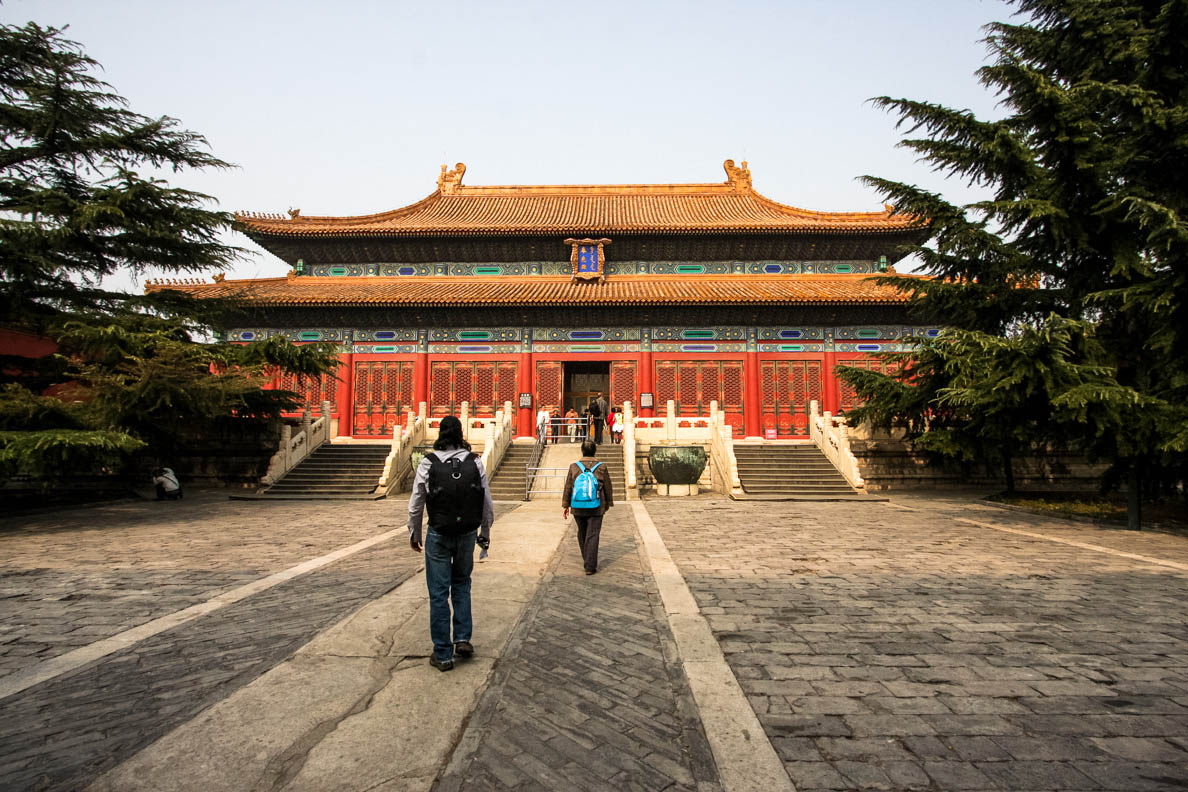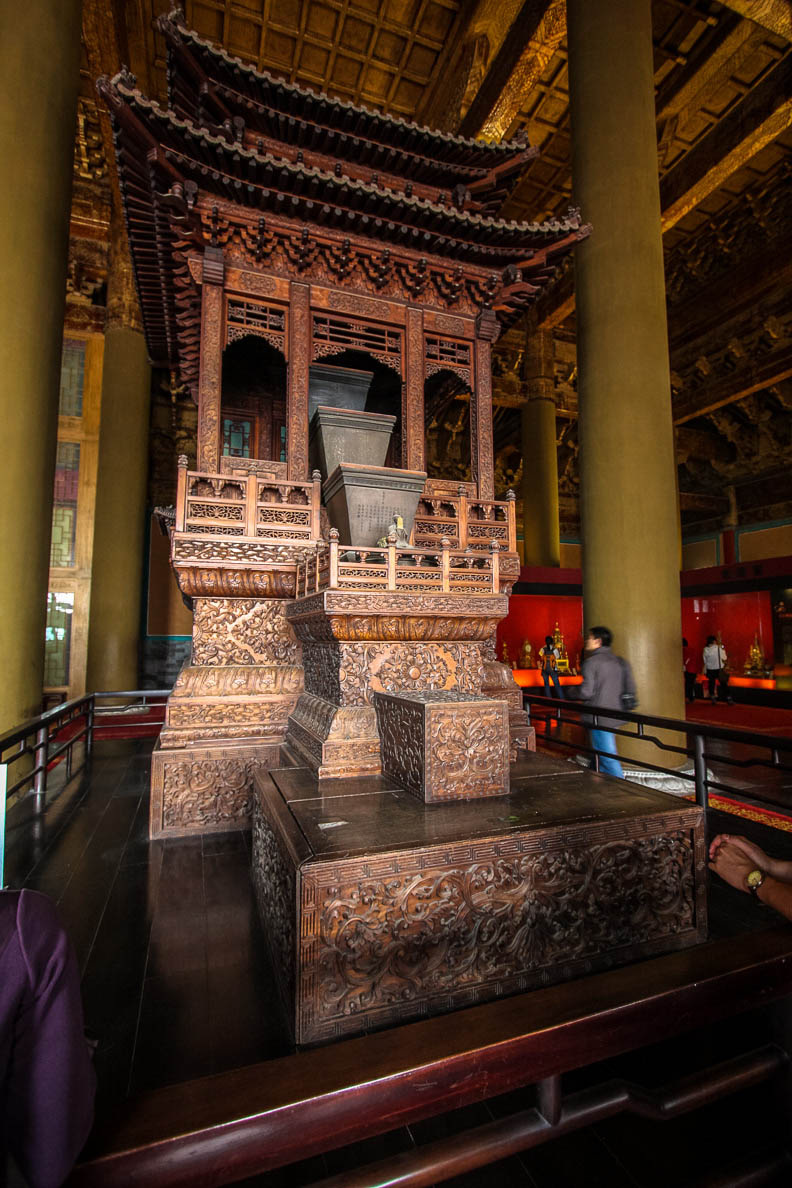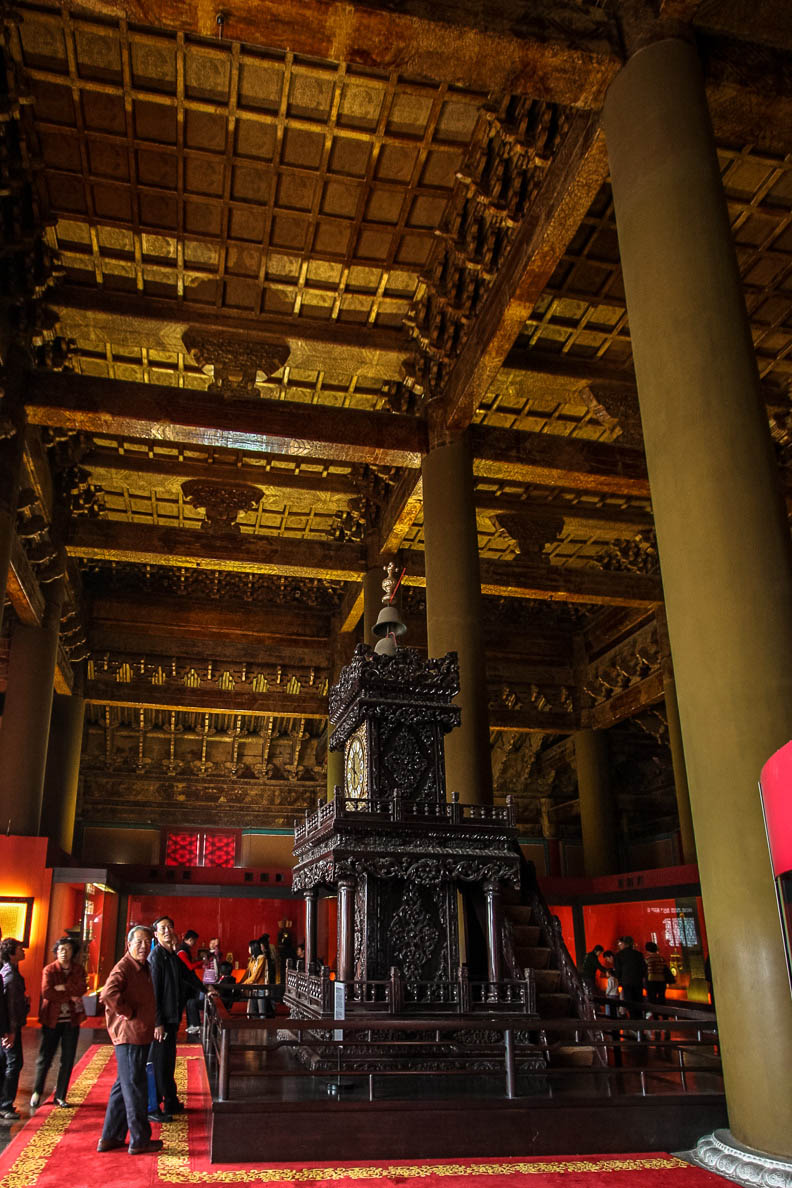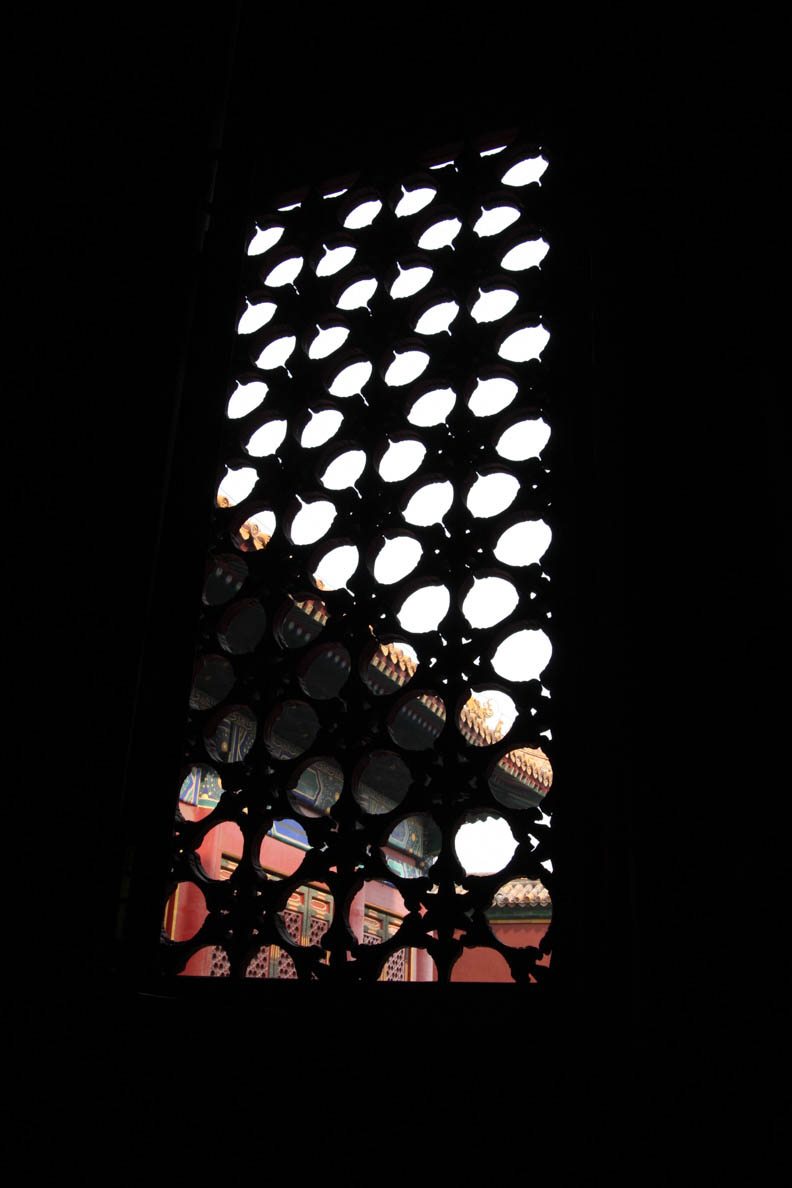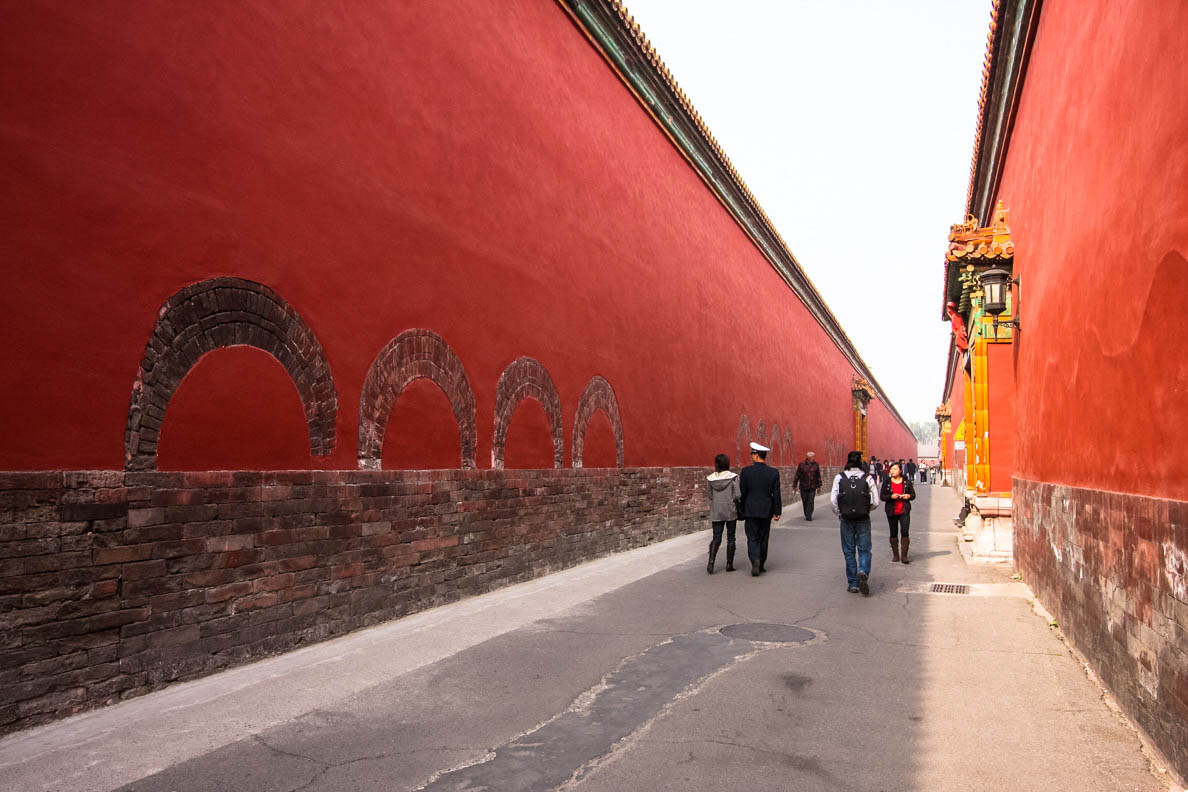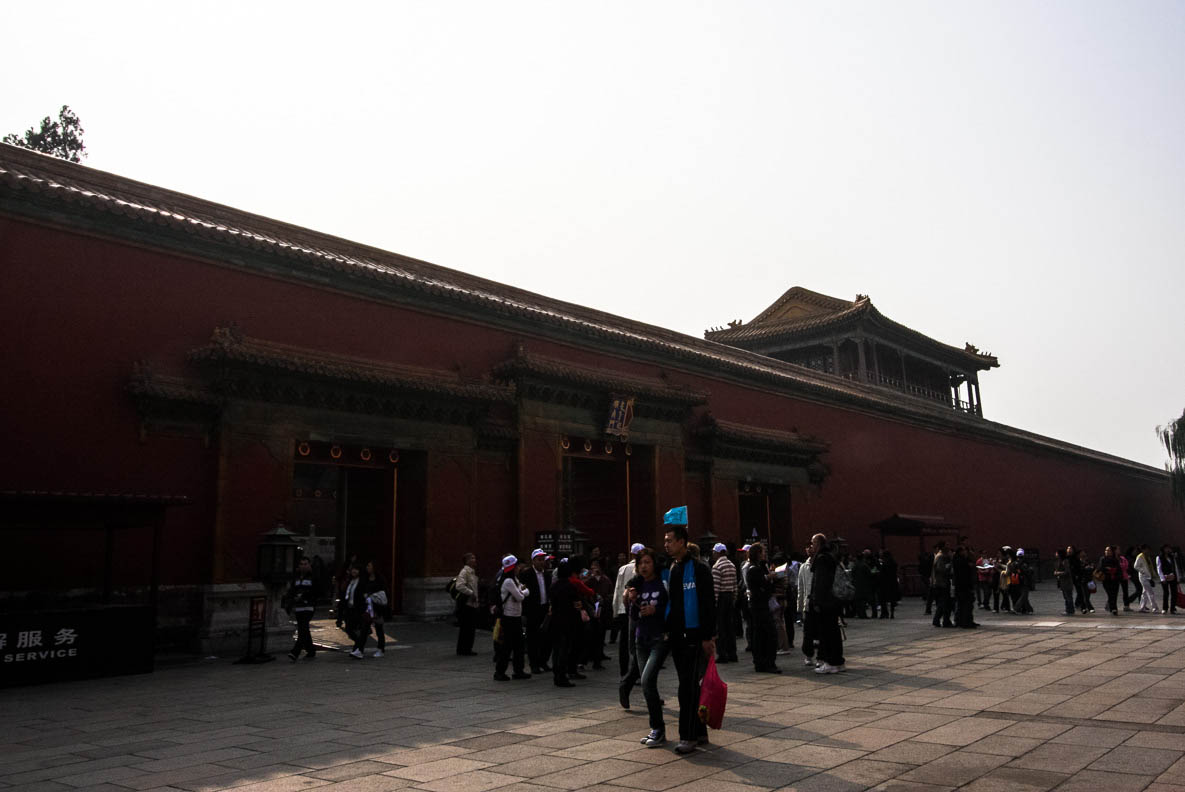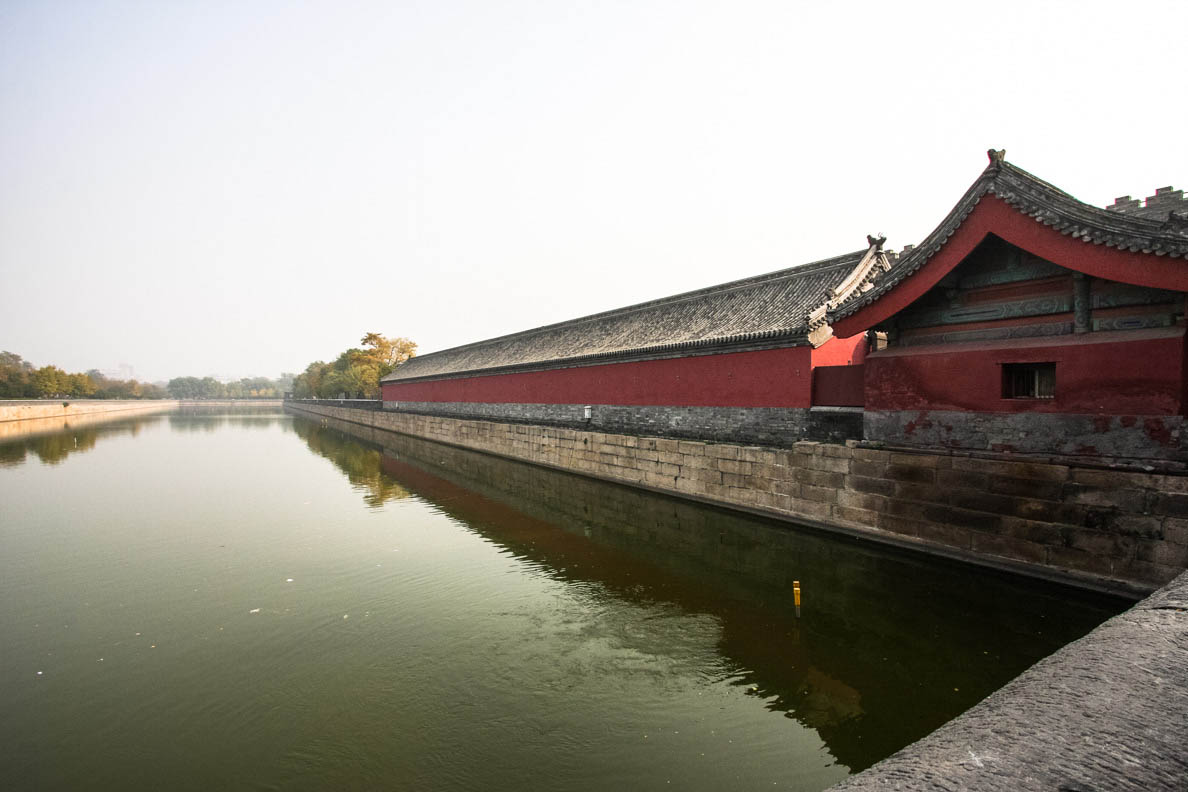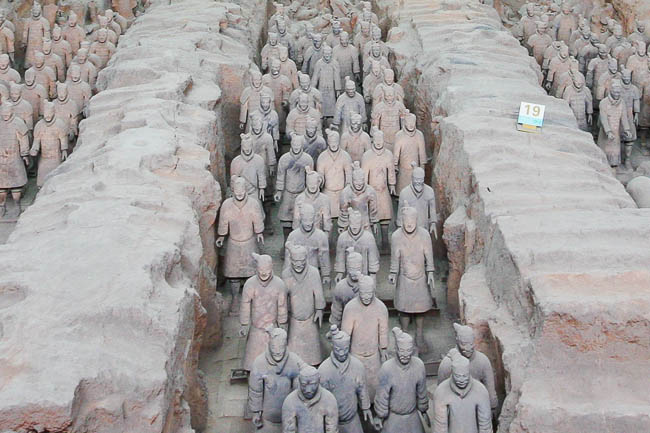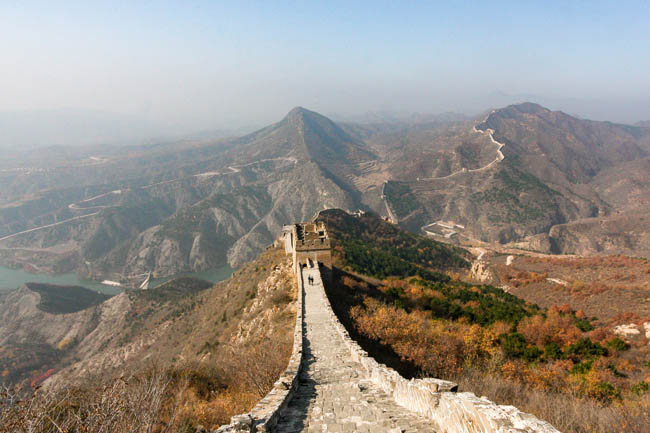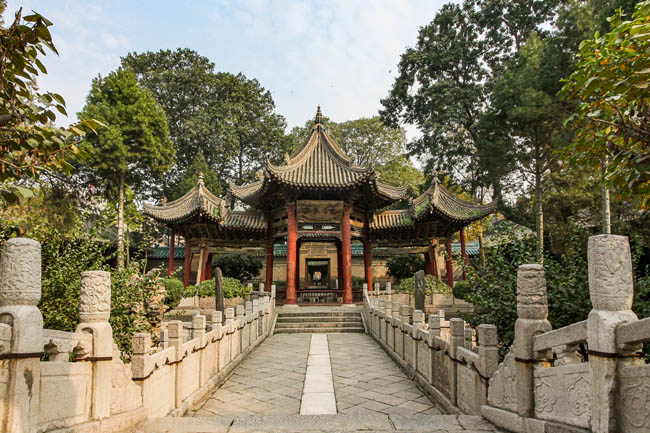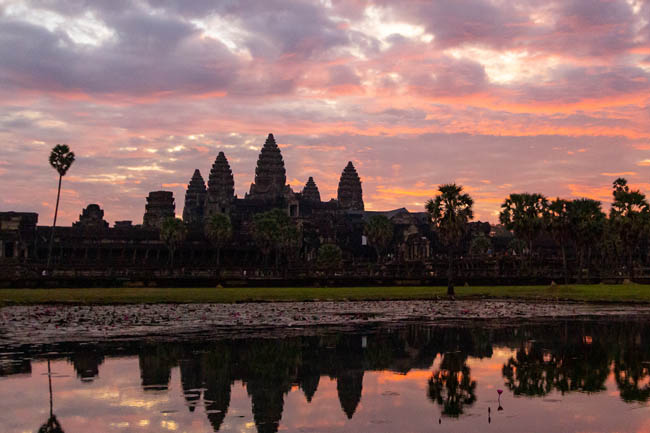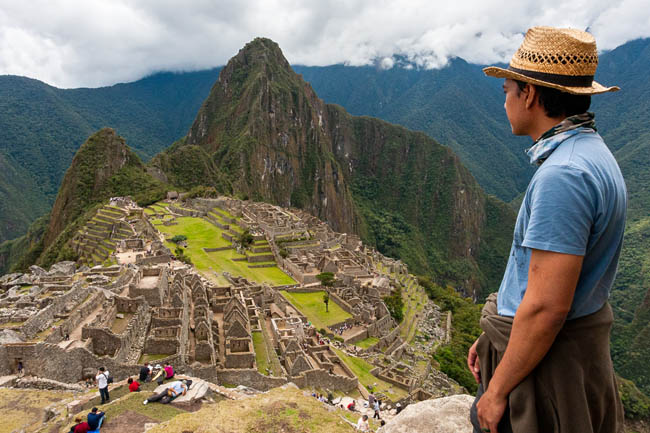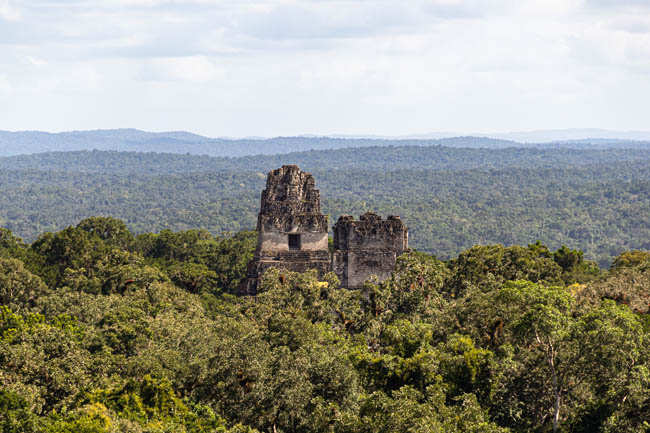CHINA
THE FORBIDDEN CITY
紫禁城
October 2009 • Canon 40D camera
UNESCO World Heritage site
Imperial Palaces of the Ming and Qing Dynasties
in Beijing and Shenyang
T he Forbidden City, also known as the Imperial Palace, is rich in history. One too long for me to summarise in this article. But here’s a little background: The Forbidden City was constructed to represent the Emperor’s connection to Heaven. It was the residence of Ming and Qing Emperors for over five hundred years, from the 15th Century up until 1911. The general public were forbidden inside (hence the name) until 1925. Surrounded by a 52 foot wide, 2 meter deep moat, 30 foot high wall and over 800 buildings, The Forbidden City represents the largest and best preserved traditional Chinese architecture. The layout of the city is based on the Chinese cosmic diagram of the universe, with a north-south rectangular grid.
Symmetry is everything here; following the axis North–South, East–West. It is divided into two parts: an outer court and an inner court. The outer court was where the Emperor would conduct court affairs and ceremonies. The Inner court was the living quarters for the Emperor and conducted everyday affairs. It was a chilly, grey morning today. The smog was pretty bad making the skies grey. We walked through Tienanmen Square, to get to the entrance of the Forbidden City. There were hundreds of people everywhere. So many local tourists in large groups were scattered everywhere.
Gate of Supreme Harmony
太和门
We walked through the formal entrance to the Palace known as the Meridian Gate 午門 which leads to the outer courtyard. You already got a sense that things were going to be really large by the ‘U’ shaped tall walls of the gate. To my surprise a small, ‘S’ shaped river went across the courtyard East to West. The Inner Golden Water River can be crossed via one of five marbled bridges said to represent the five virtues of Confucius: Benevolence 仁, Righteousness 義/义, Propriety 禮/礼, Knowledge 智 and Integrity 信.
As we approached the Gate of Supreme Harmony 太和门 you could see the beautifully decorated double eaves roof. Bronze Lion statues stand guard before the gate. It was colourfully decorated and standing under the gate you can see the amount of detail that went into the decoration of the ceiling. It was also very noisy with the amount of people that was around. Through the gate we were met by another, wide and large courtyard. Because of the amount of people around, it felt like we were at a music festival. It did not feel like I was getting any sense of the history of the place. Which was a shame.
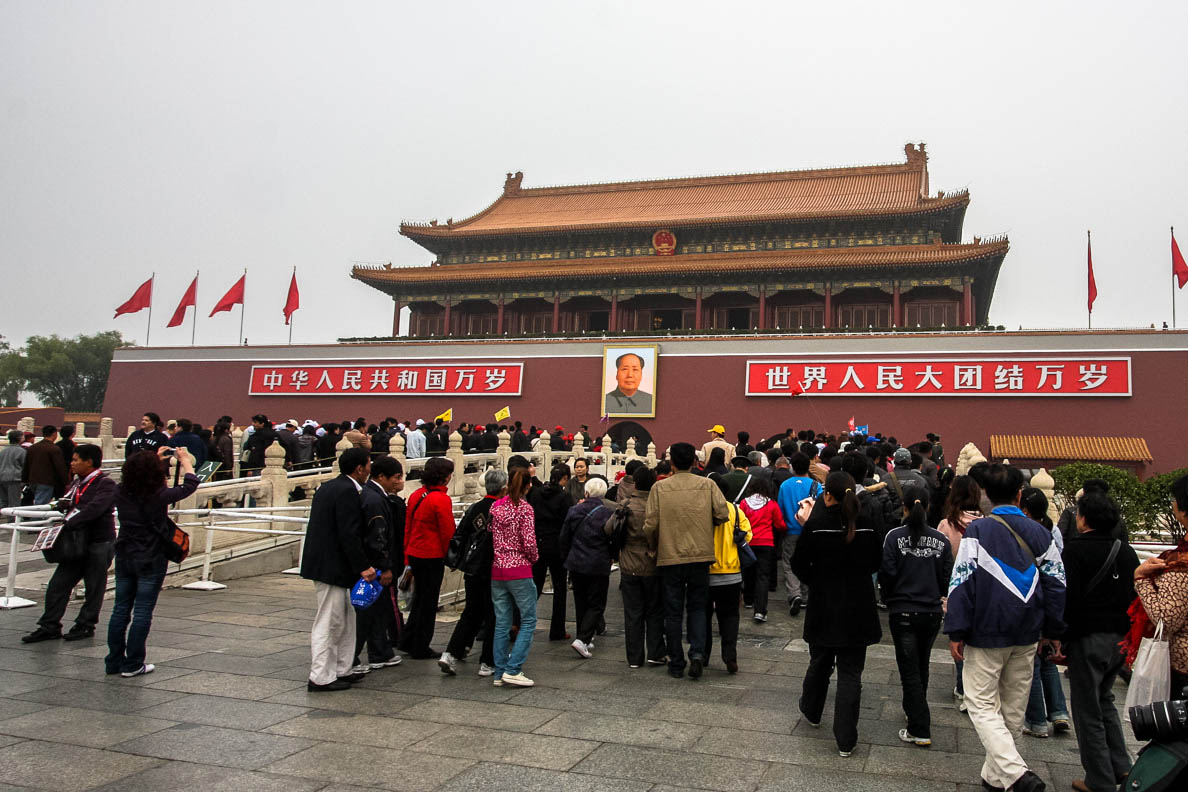
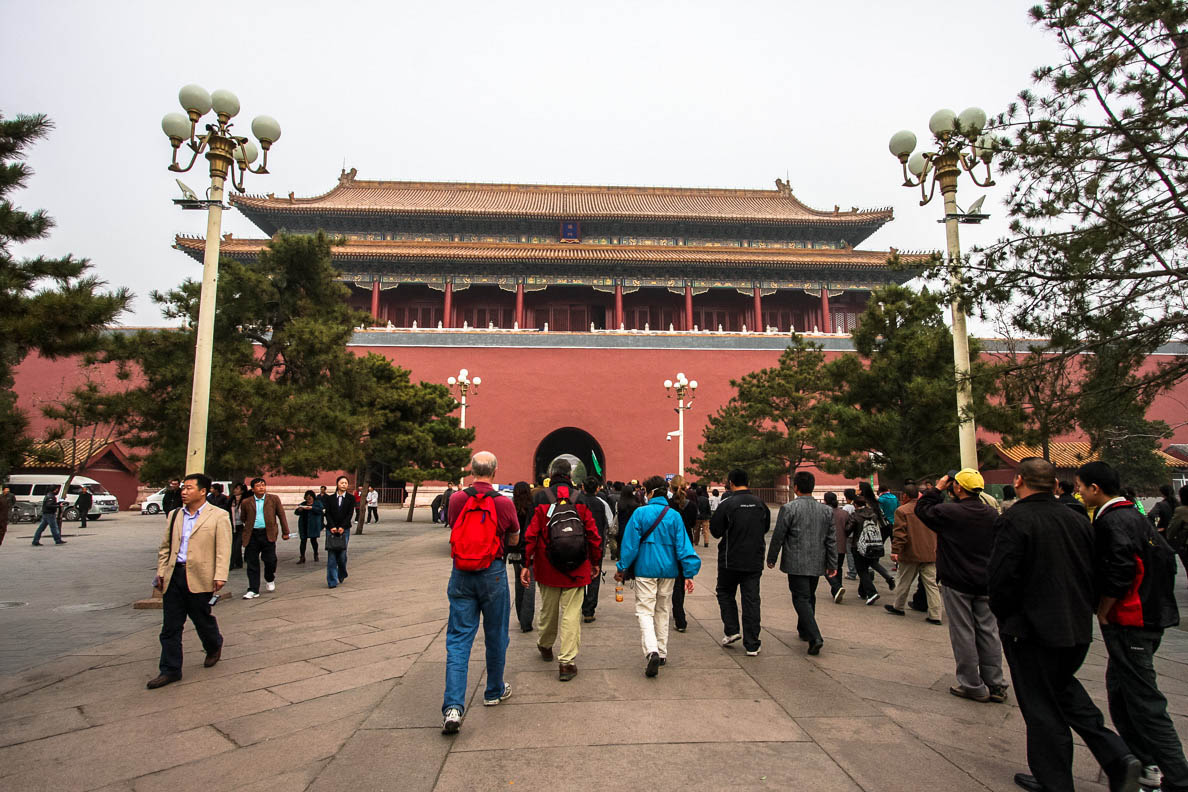

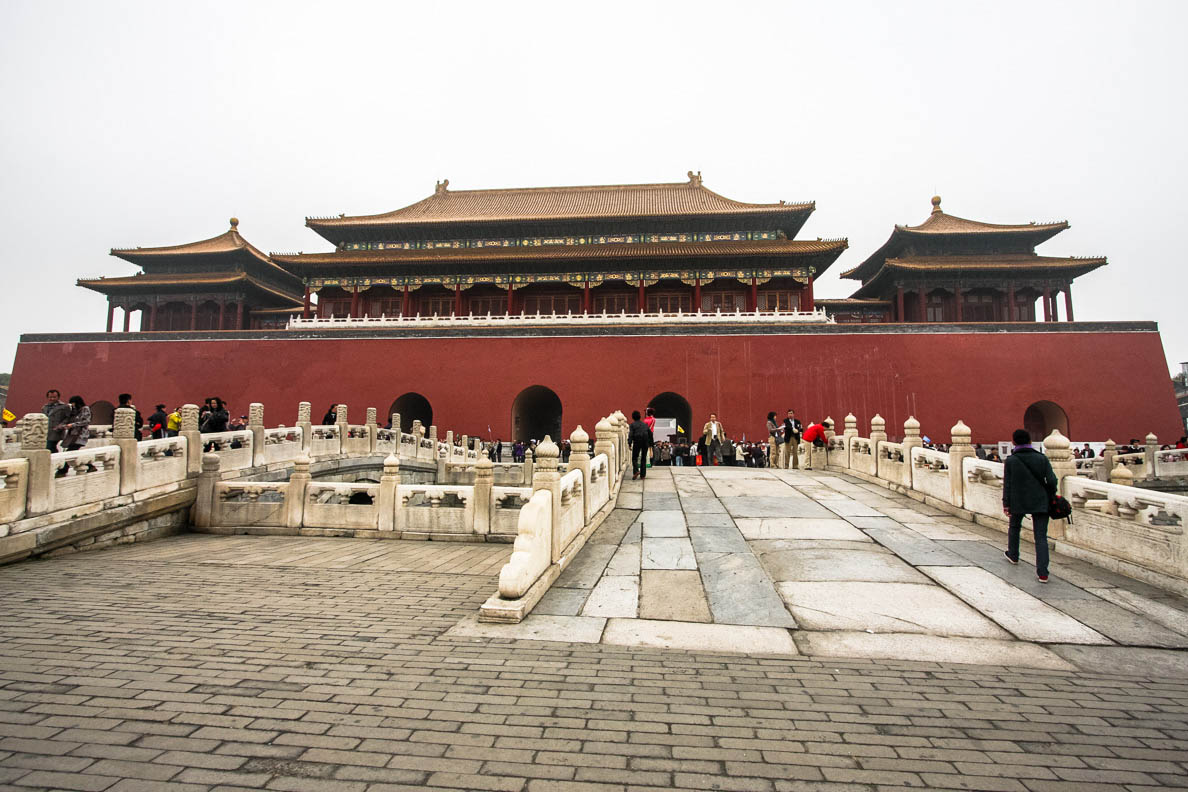
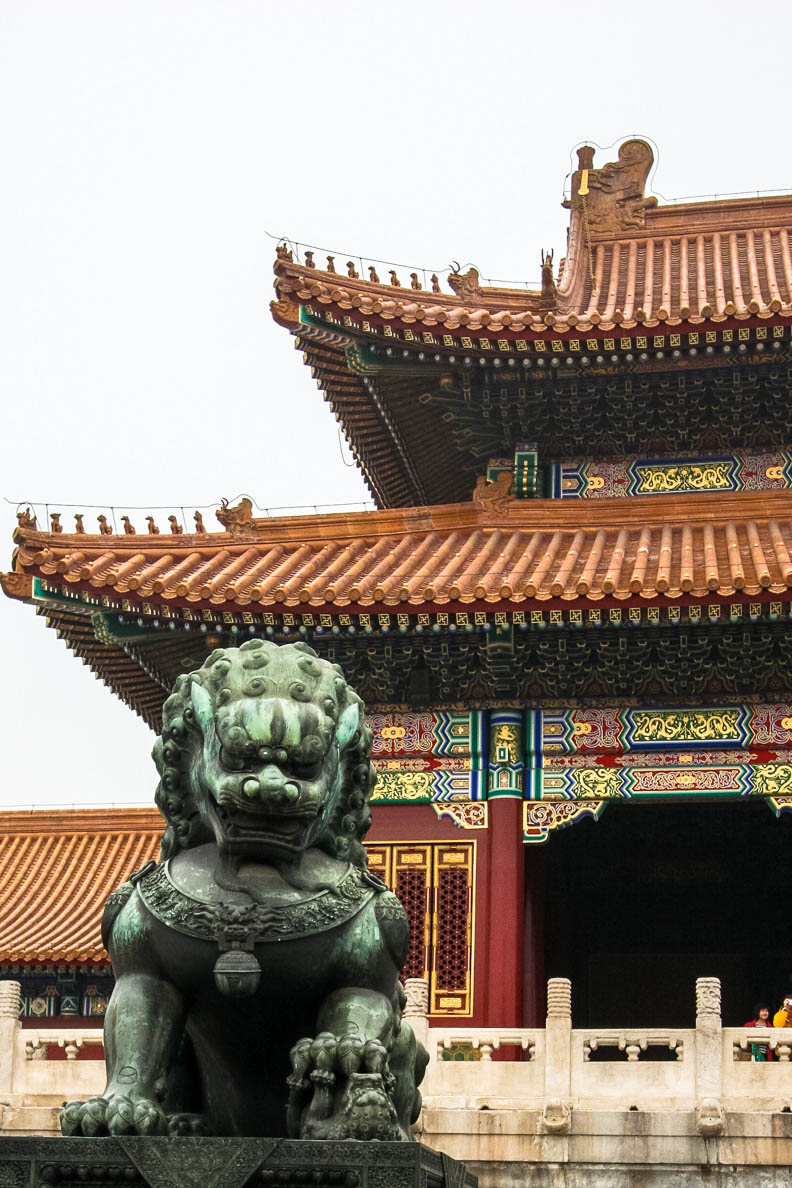
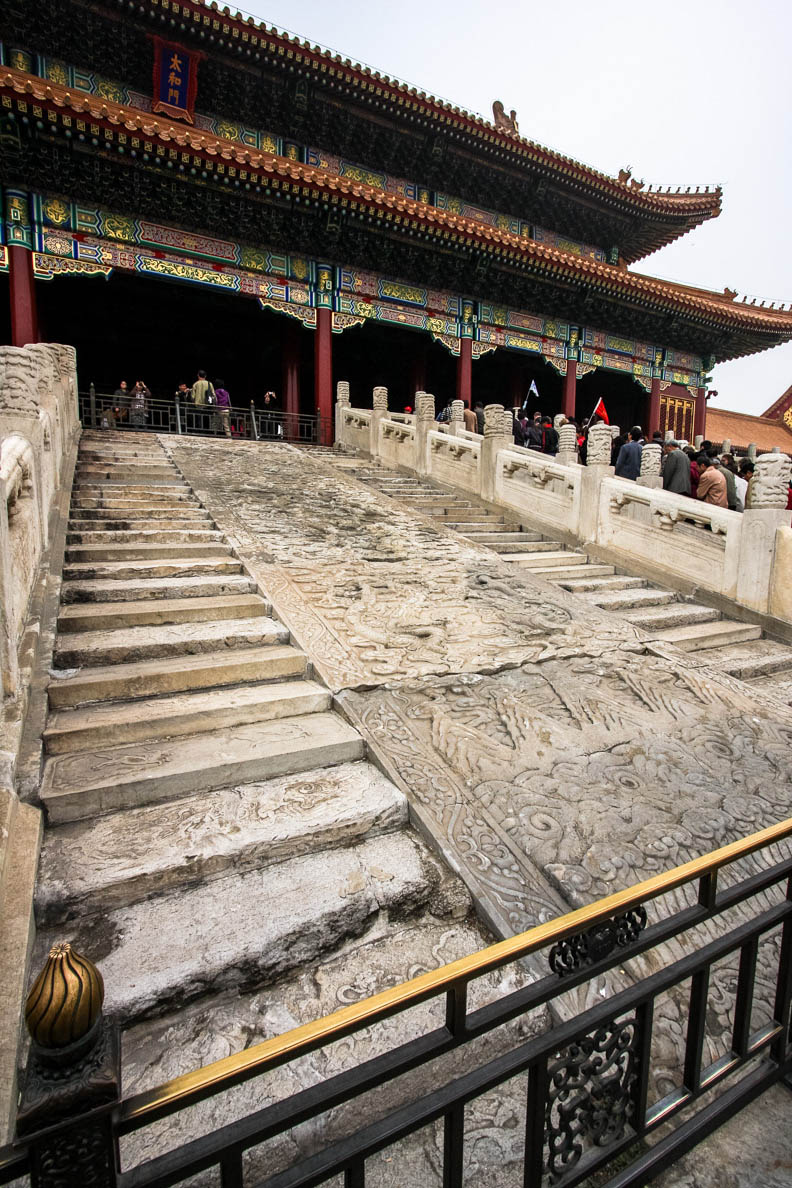
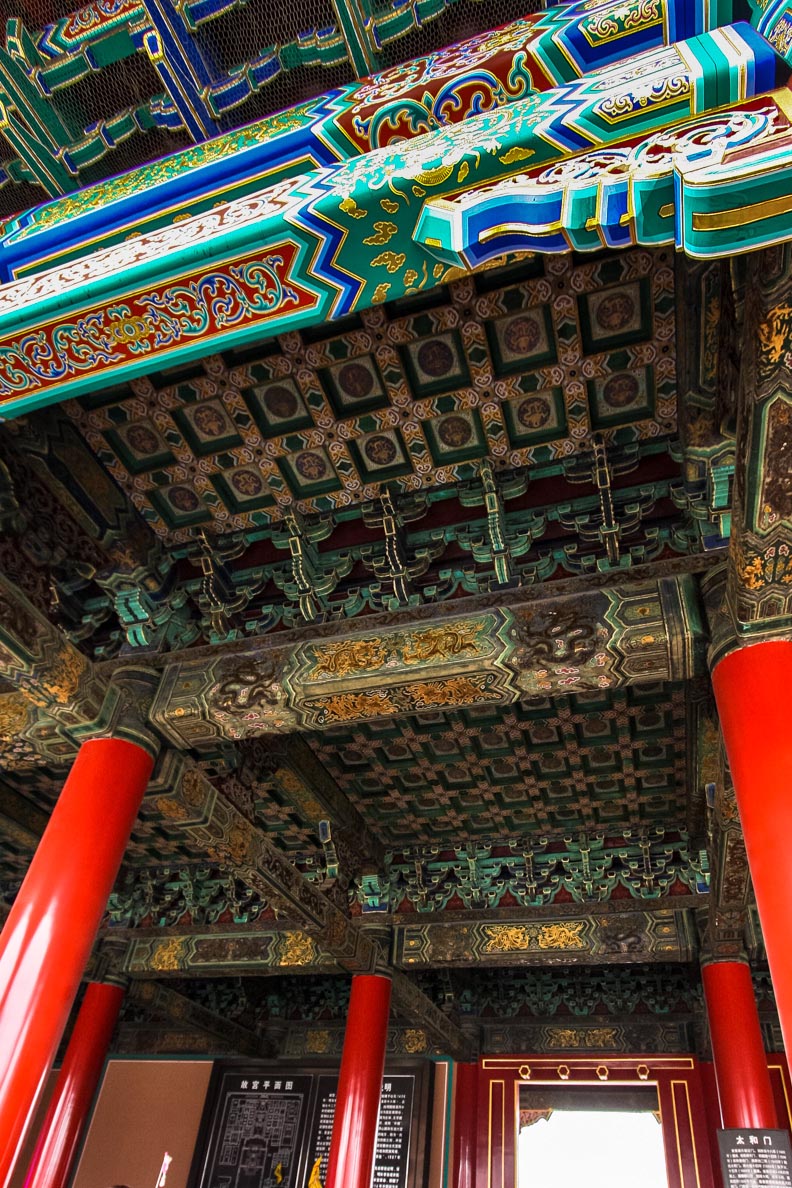
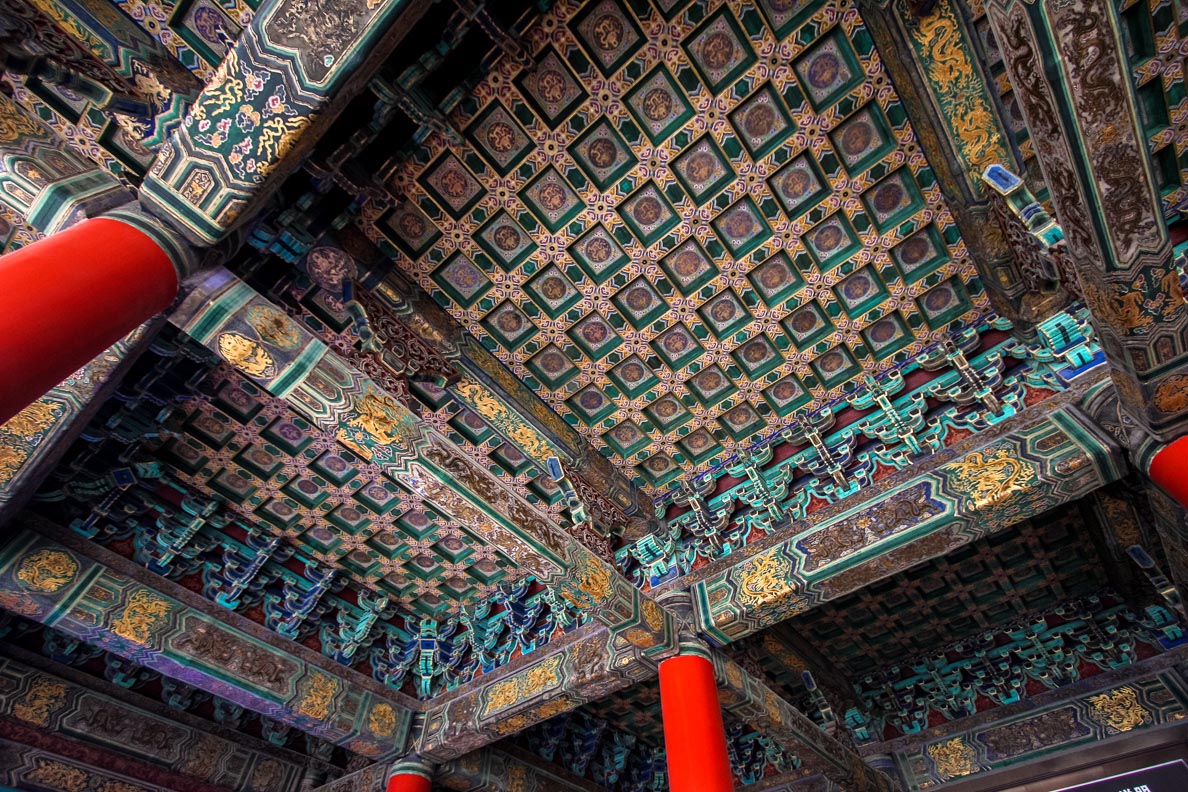
Hall of Supreme Harmony
太和殿
As you walked closer the the Hall of Supreme Harmony太和殿 you got a sense of how big the building stands. It is the largest wooden building in China and the tallest building in the Forbidden City. A three terraced stairway leads up to the hall on either side of the central stone carving of what is known as the dragon pavement. Outside the Hall entrance, the place was packed. Jam packed with people pushing and shoving trying to get a glimpse inside. You literally had to push your way through to the front to take a look and get some photos. You could not go inside the Hall, but you could see the interior. A large golden throne elevated by a platform and some steps, sits in the middle of the hall. Large columns decorated with dragons hold up the decorated ceiling.
The throne in here is regarded as the center of the universe. All important ceremonies were held in this Hall; from marriages to celebrating the Chinese New Year. After fighting through the people to look inside we walked around the massive hall to continue our journey. Behind were bronze statues of a Crane (symbol of good luck) and a Turtle (symbol of longevity). The balusters on the marble walls are elegantly craved with dragons and Phoenixes. There is also a Sundial 日晷 made of marble that symbolises the Emperor's power to grant time to all the people in the country.
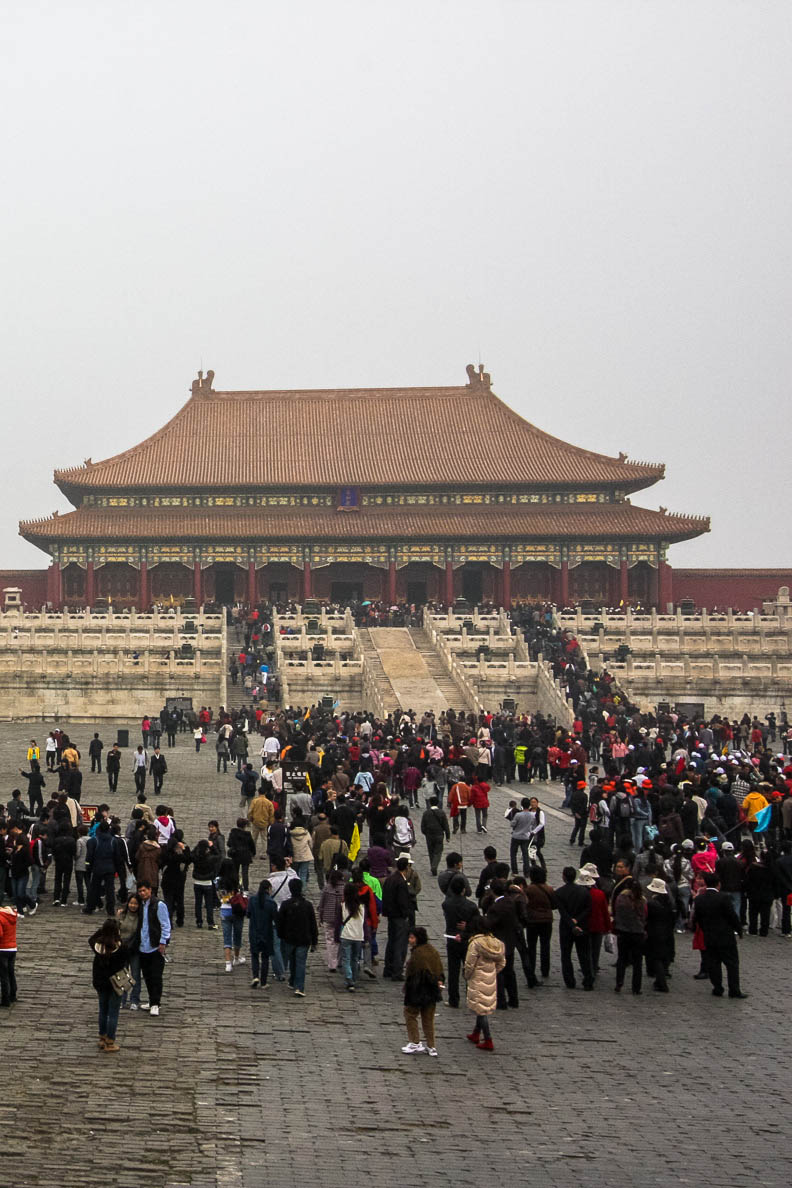
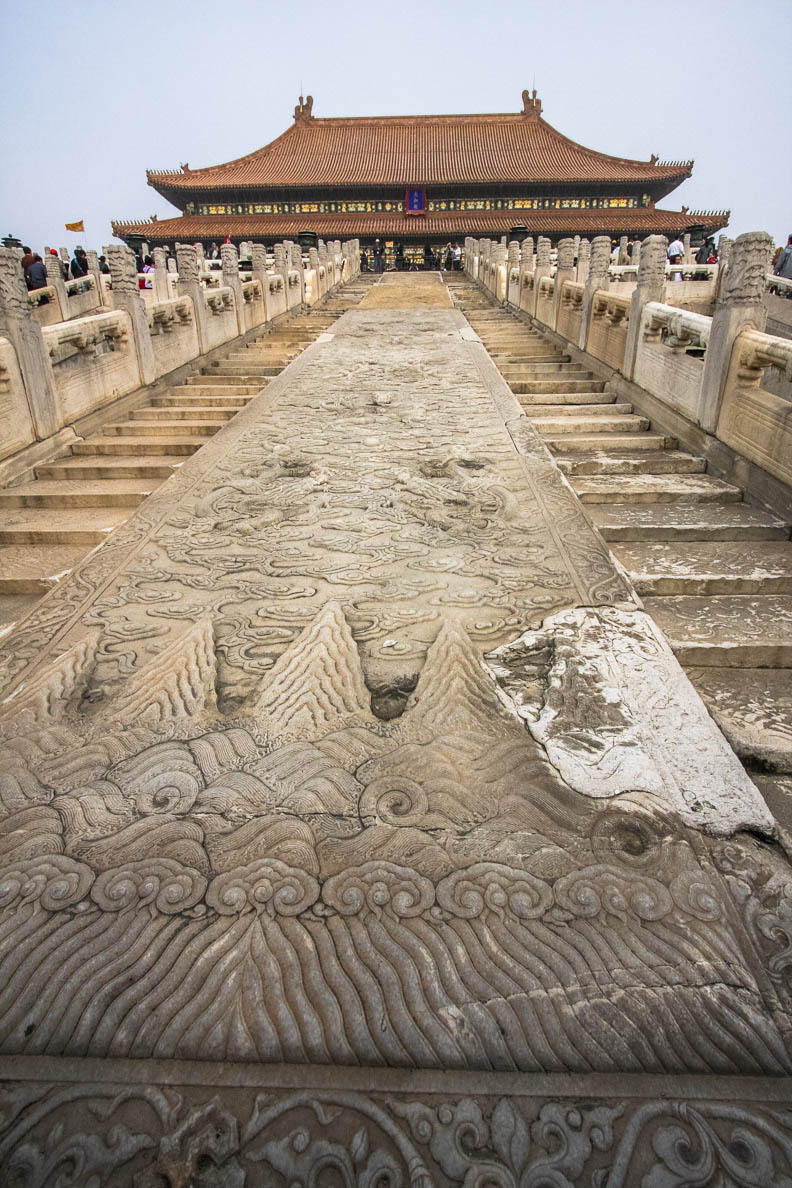
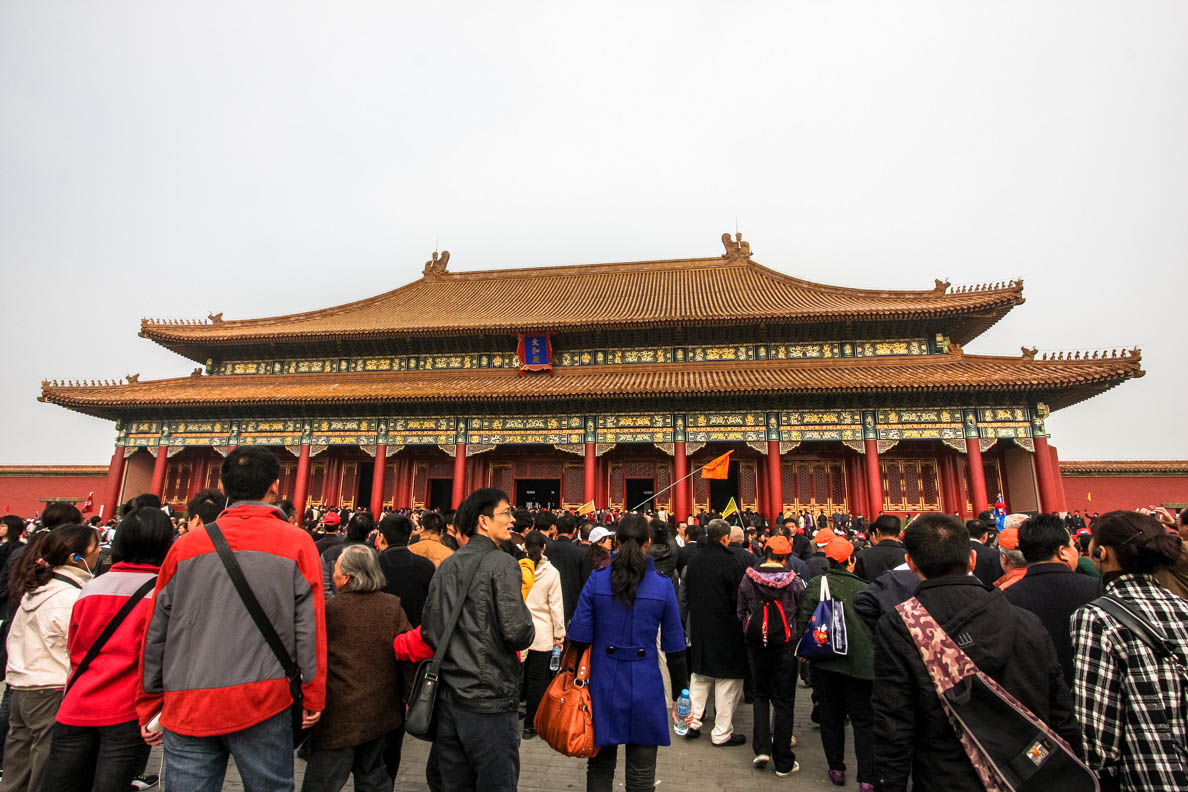
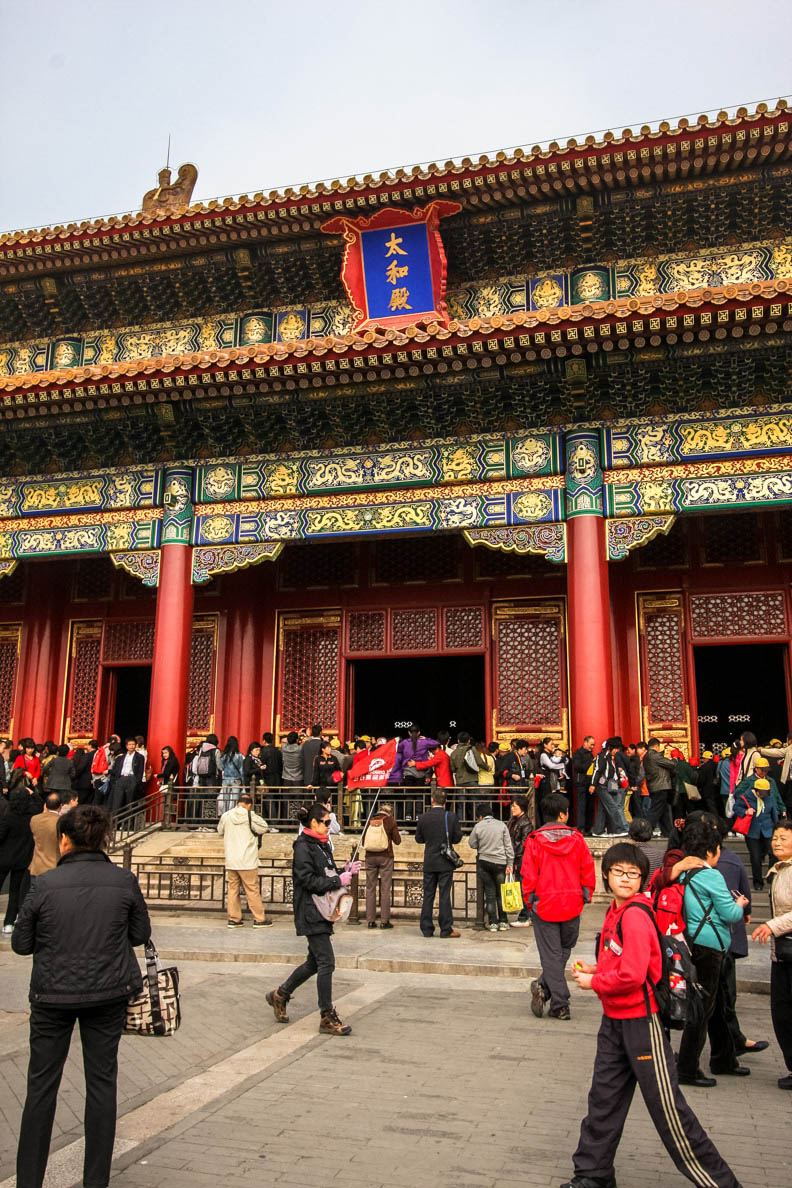
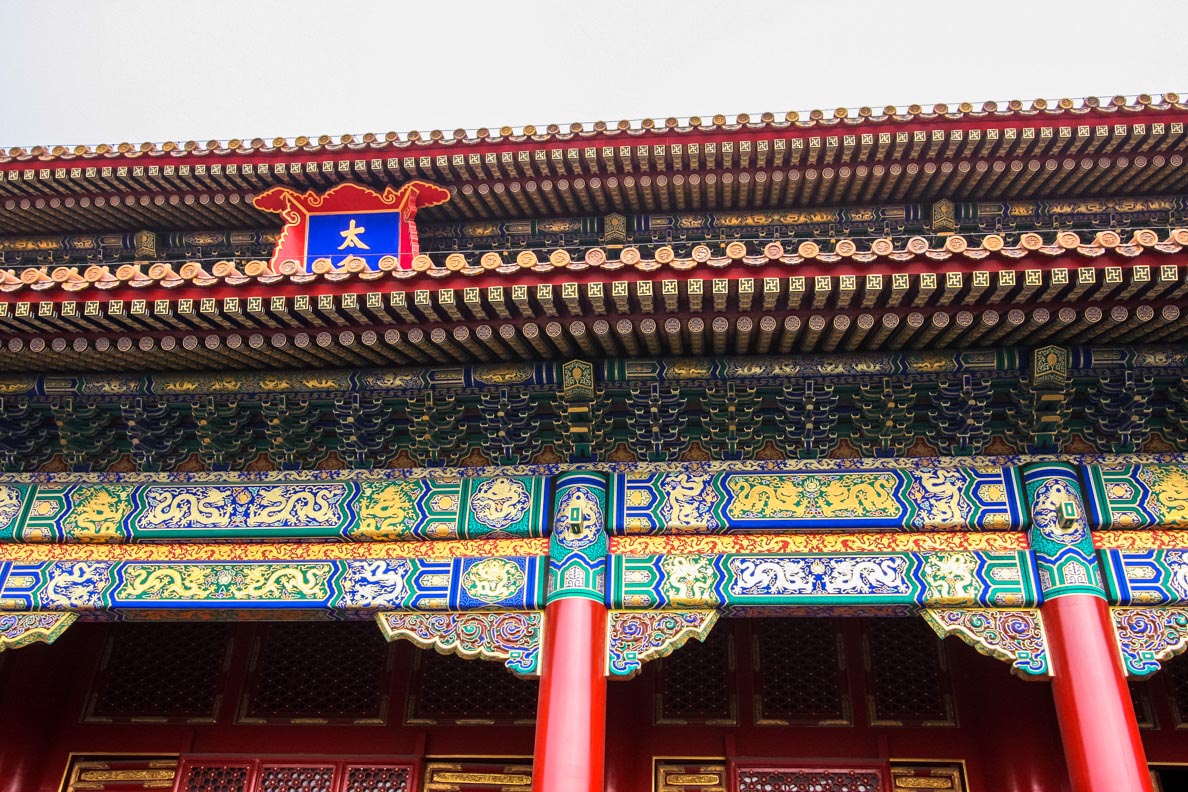
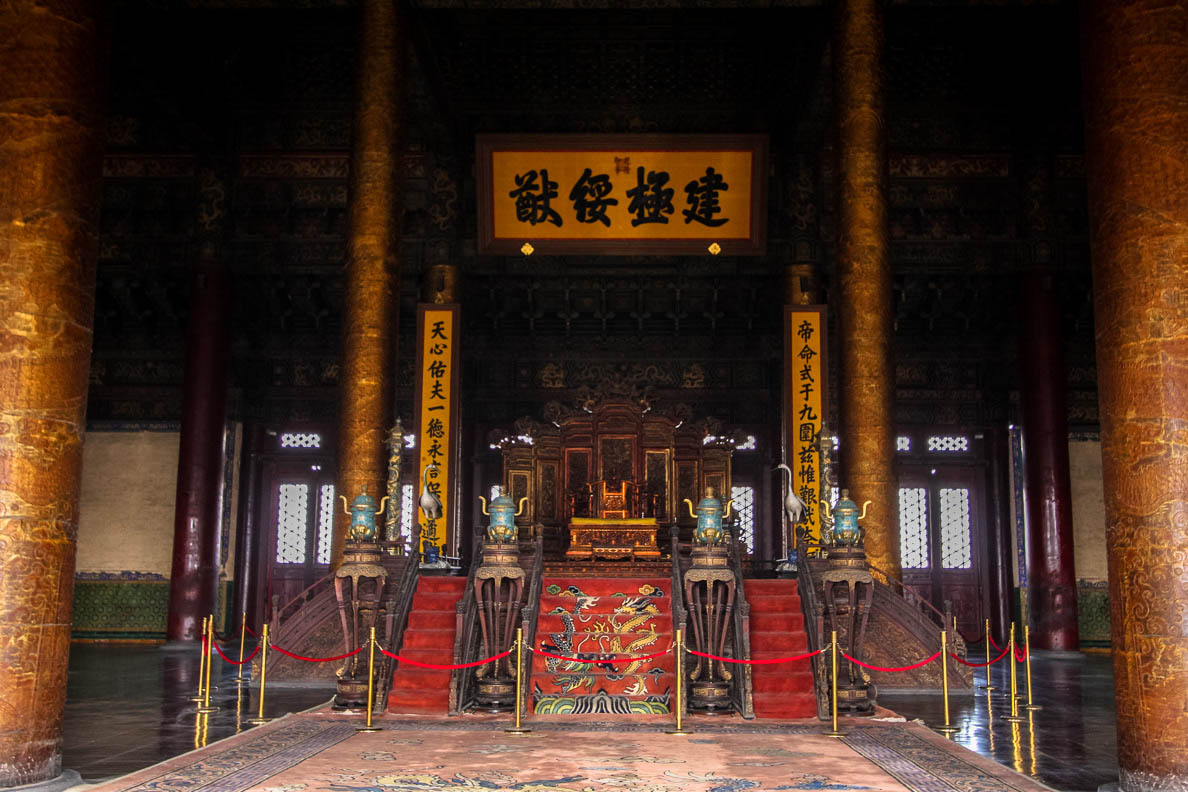
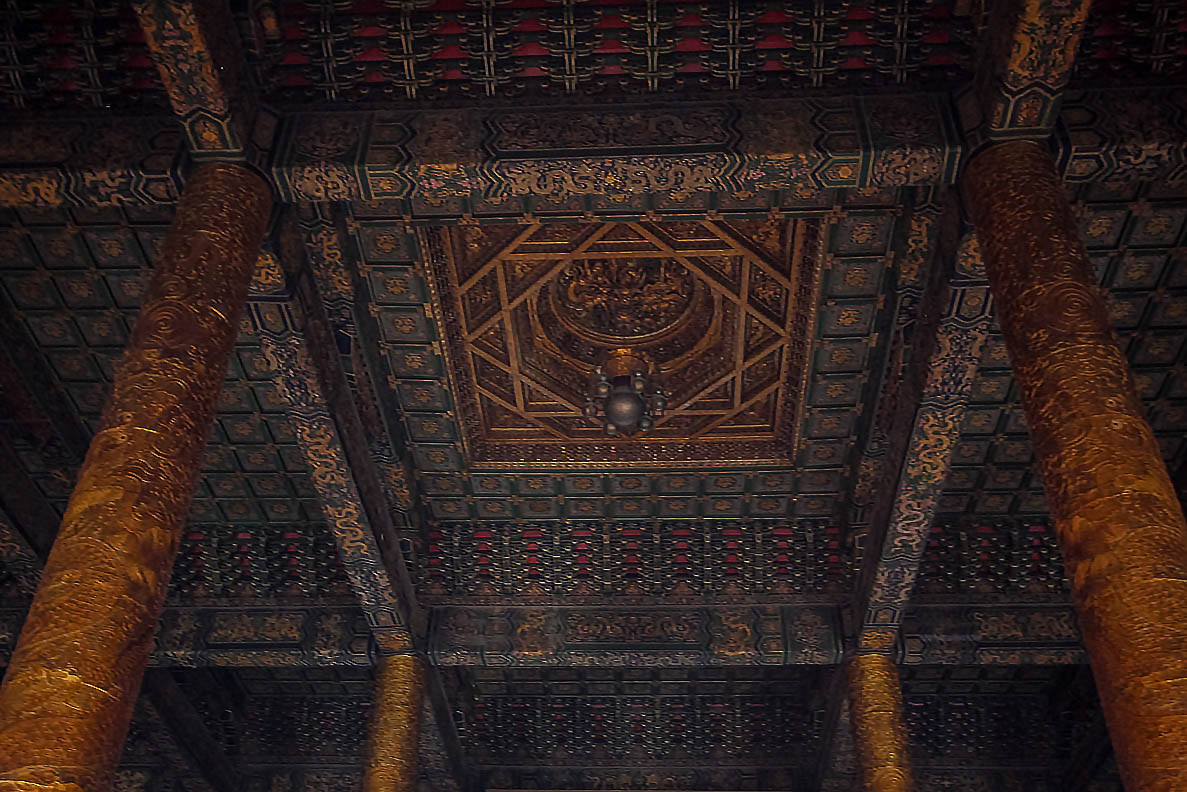
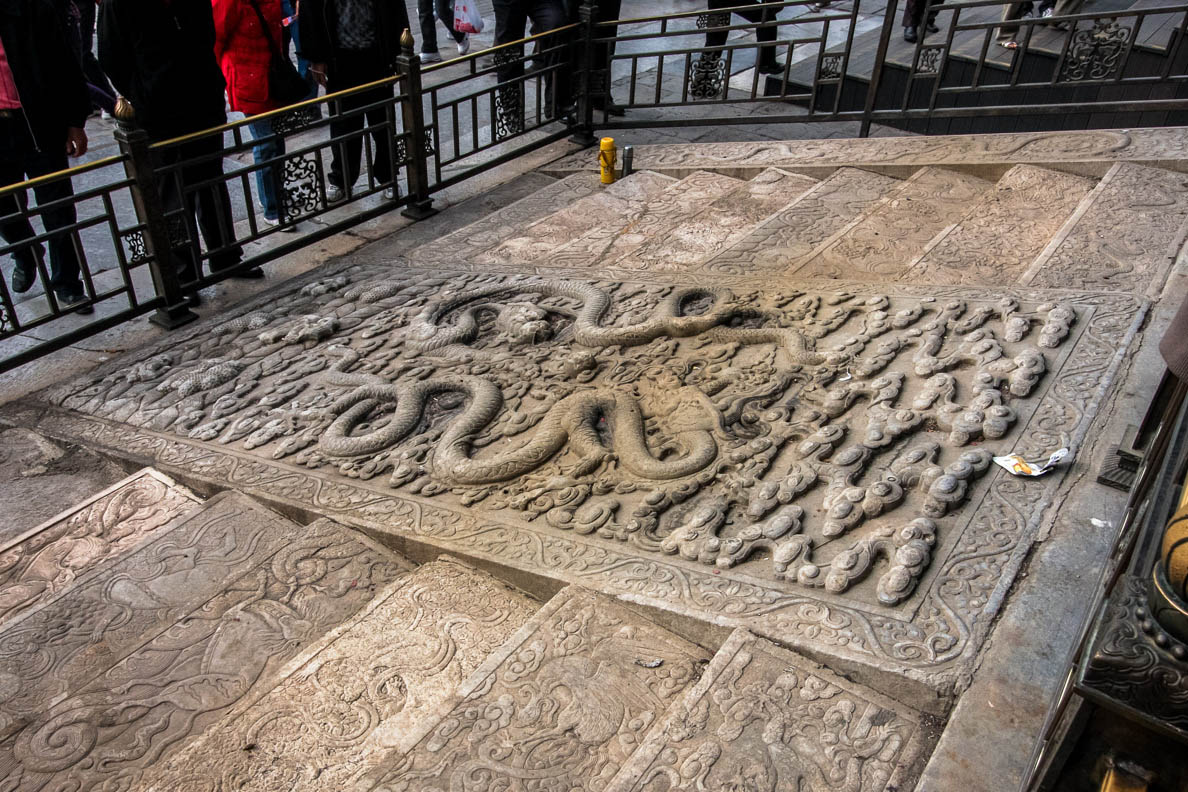
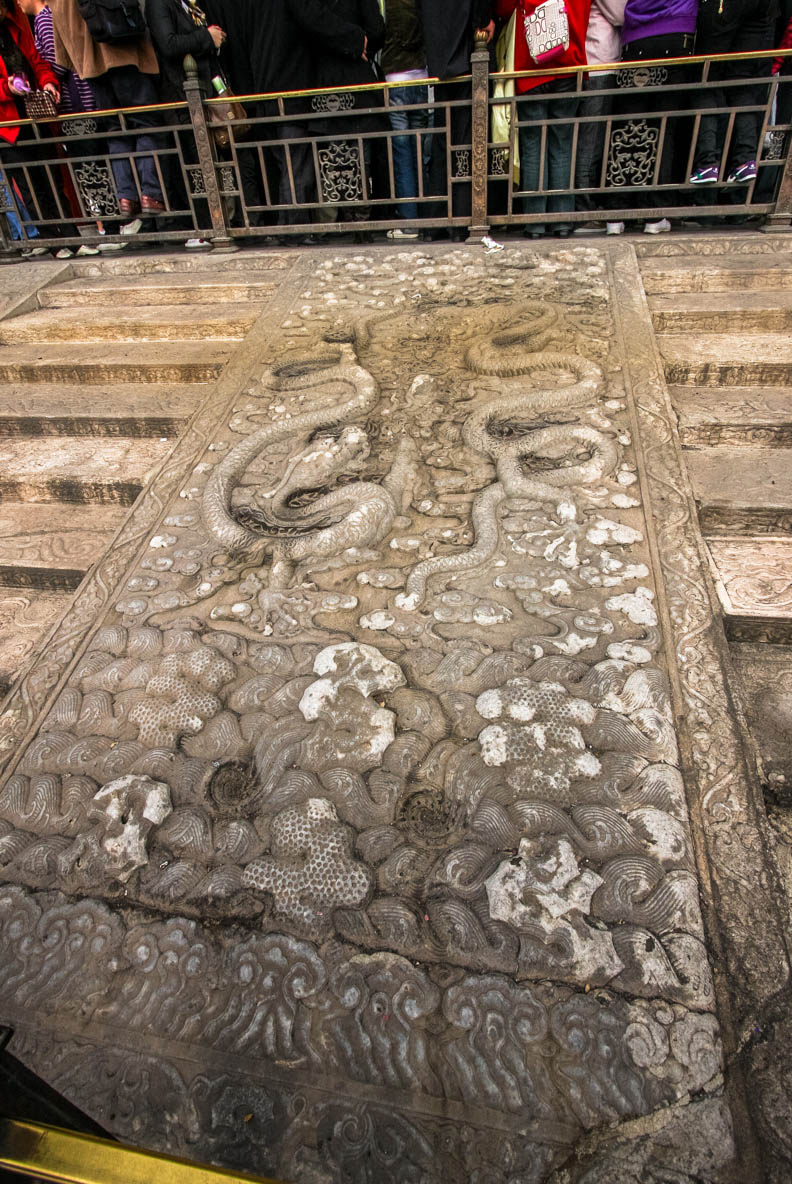
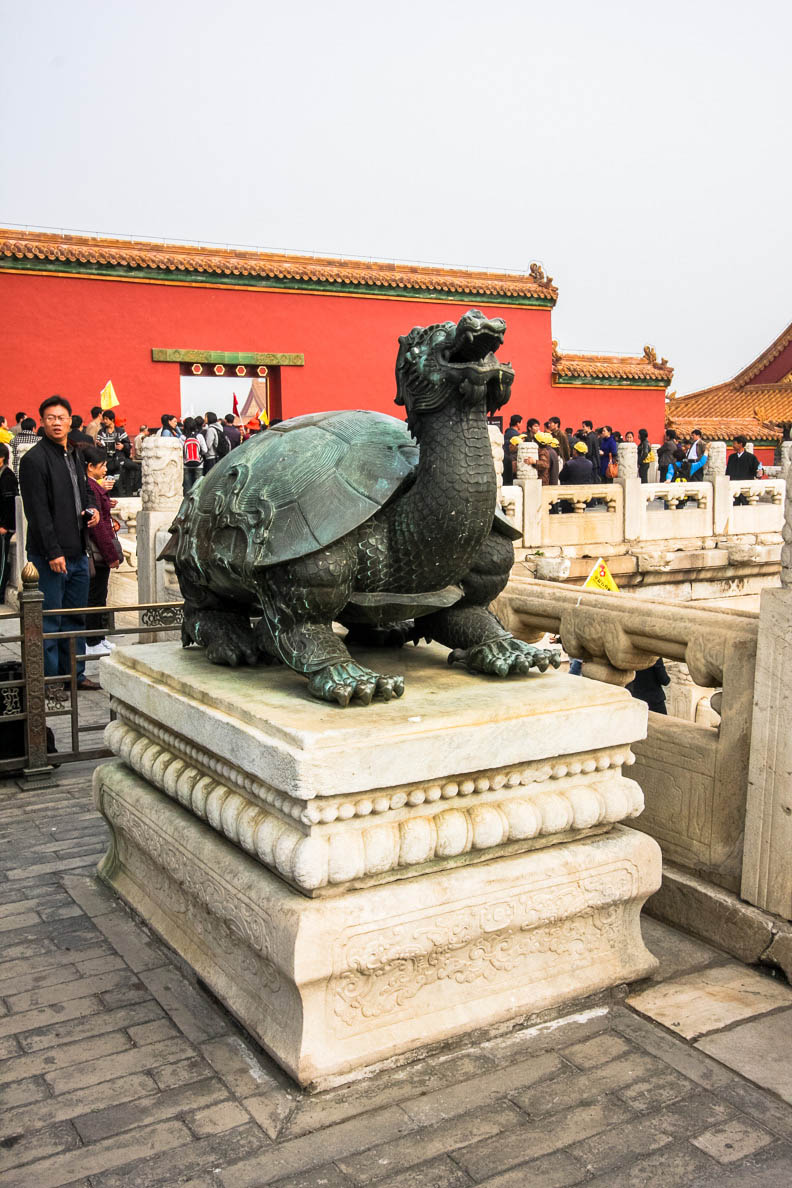
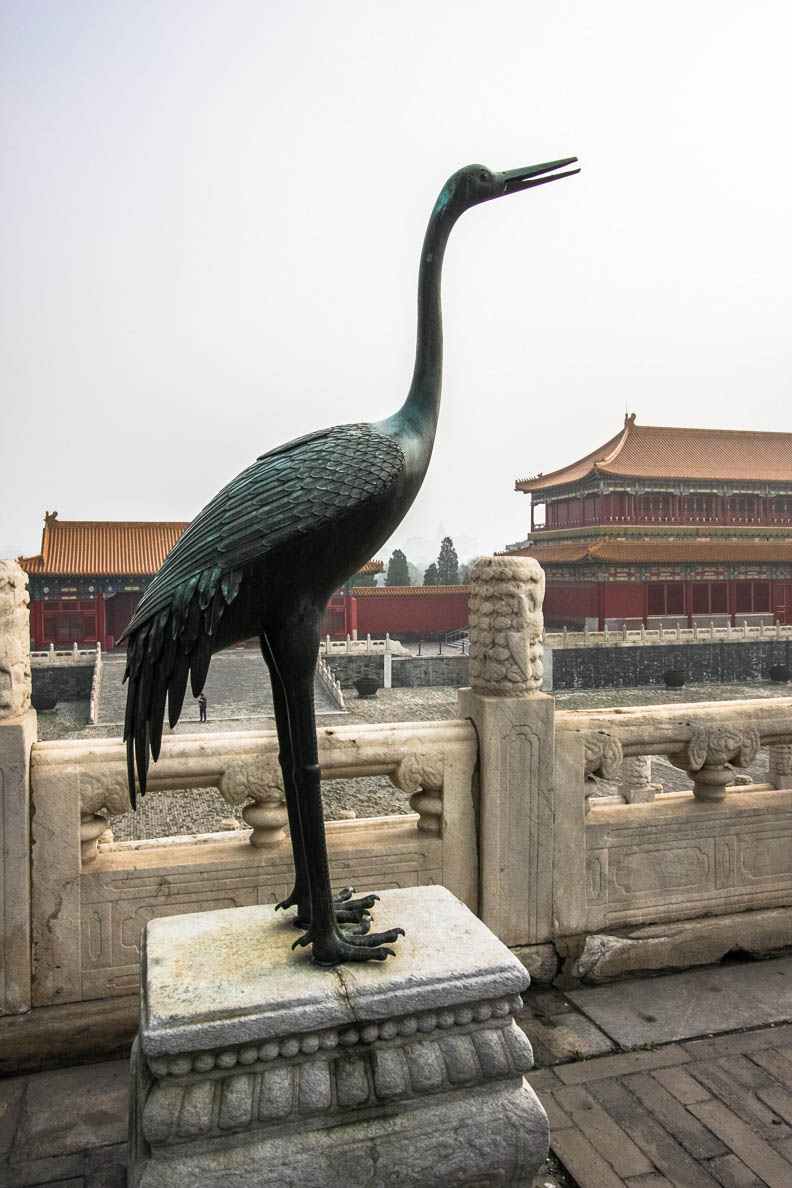
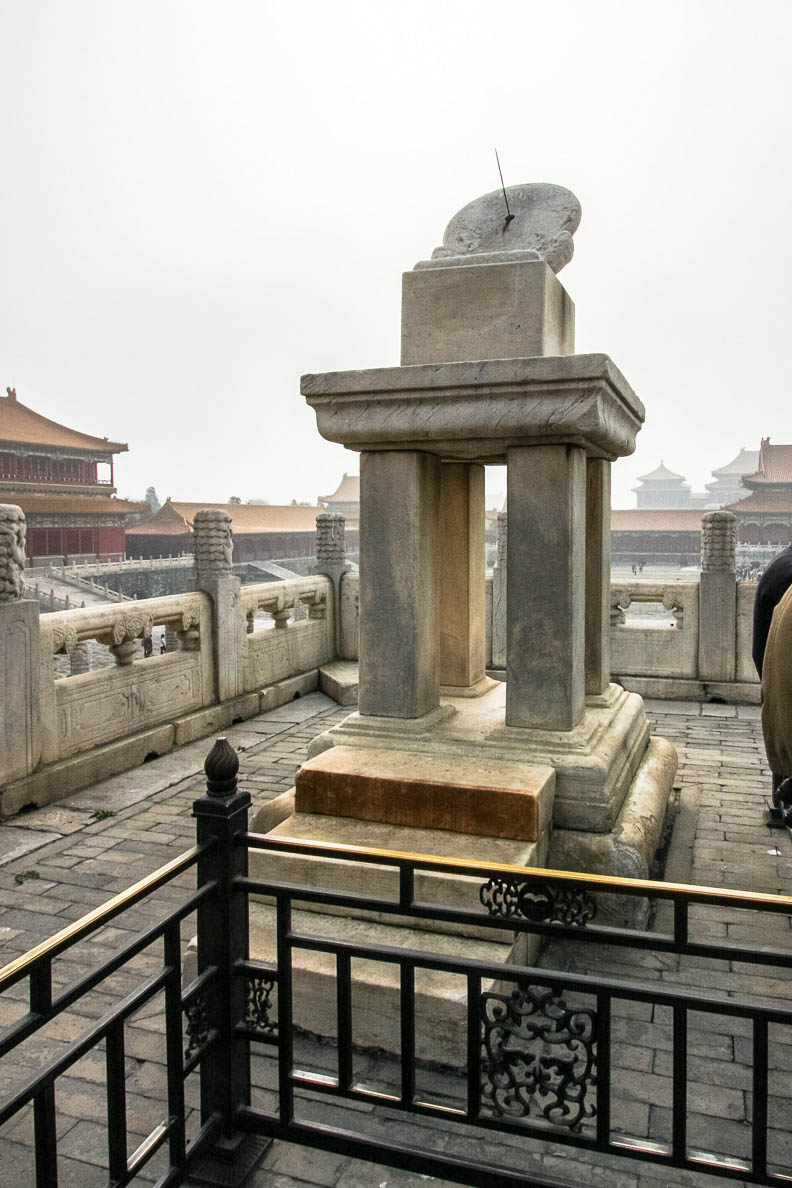
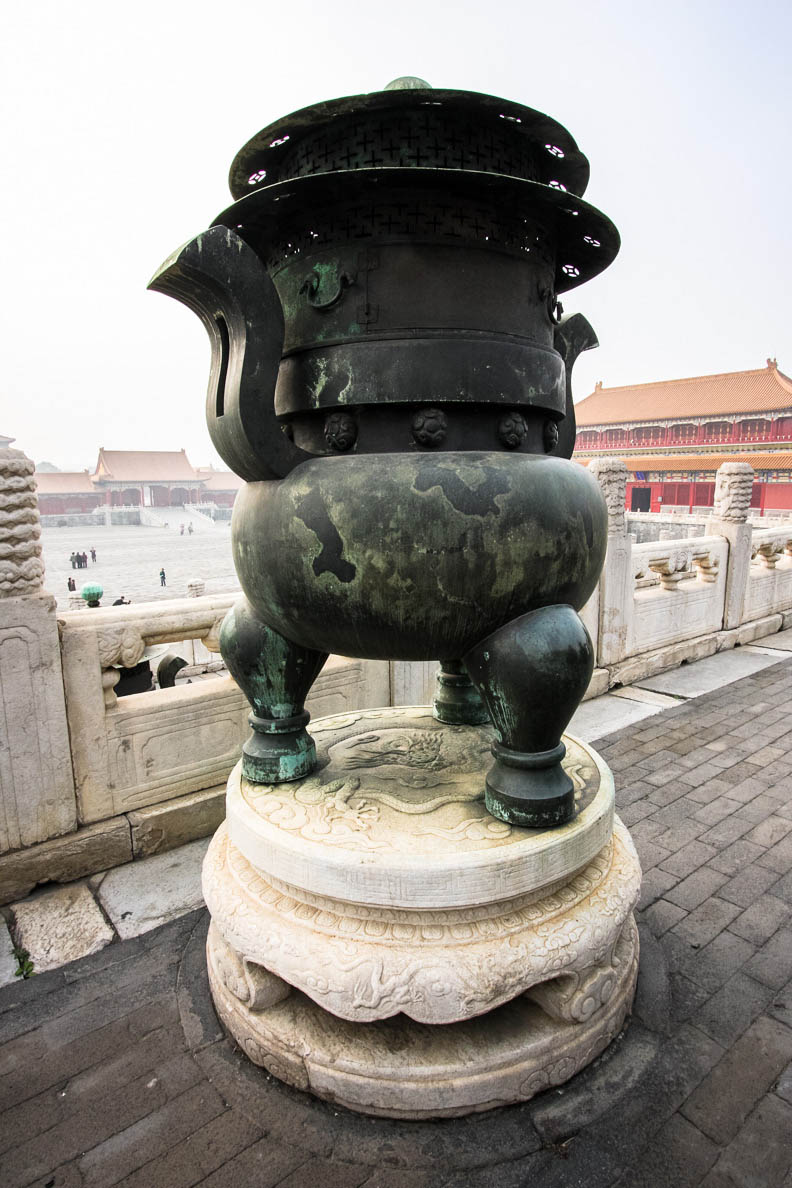

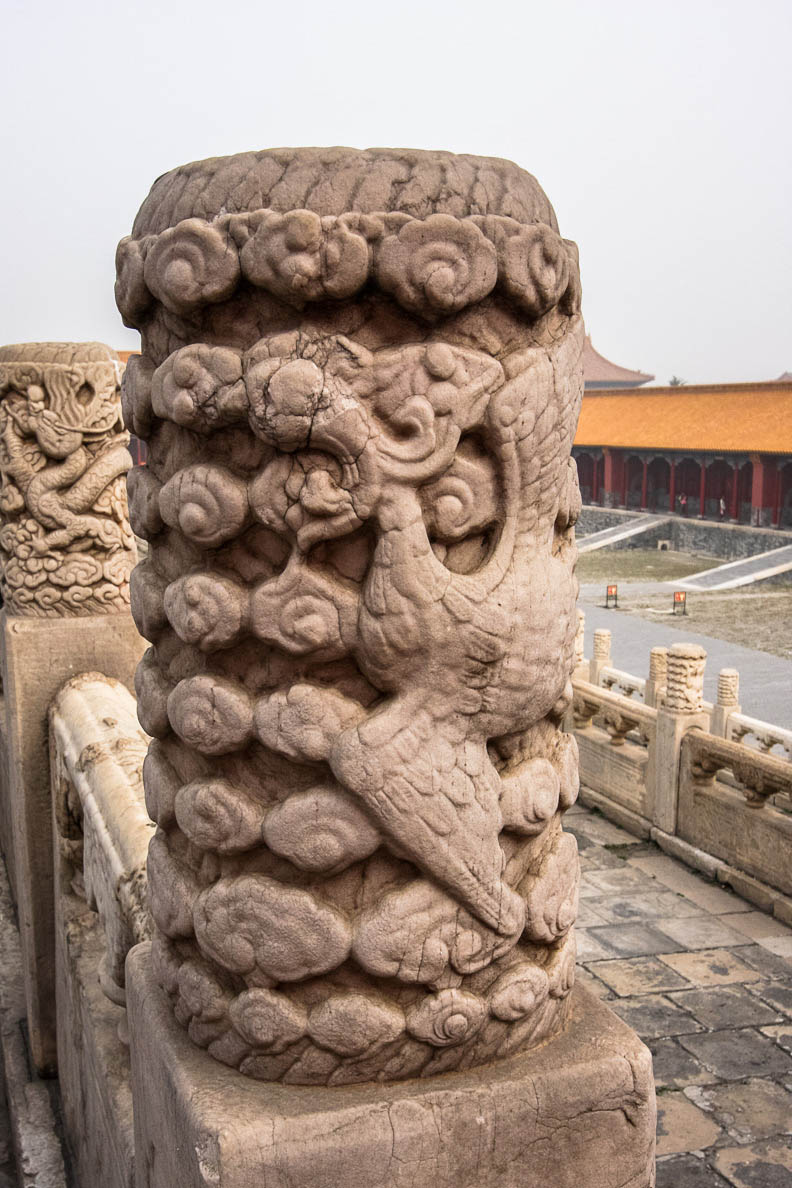
Roof decorations
A symbol throughout China on ancient buildings is the roof decorations. At the end of the eave, there is a row of figures to represent the level of importance that the building has in relation to the emperor. More figures it has, the more important the building or the owner is is to the Emperor. Naturally, the Hall of Supreme Harmony being the most important building, has the most figures. The figures are also pretty interesting.
First you have an Immortal riding a Rooster 仙人骑鸡. Next is a Dragon 龙, Phoenix 凤 , Lion 狮子, Heavenly Horse 天马, Auspicious Horse 海马, Suan Ni 狻猊 (a mythical creature combining a lion, horse and wild beast), Guardin Fish 押鱼, Xiezhi 獬豸 (mythical creature combining lion and dog with horns) and a Bull 斗牛. The final figure is unique to the Hall of Supreme Harmony—It is an immortal who carries a sword. Since he is the tenth in the row he is called Hangshi 行什. Finally the last figure is Chiwen 鴟吻 a large dragon that protects the building from fire.

Hall of Central Harmony
中和殿
The next building you come to is the Hall of Central Harmony 中和殿. It is a smaller, square building. A throne is in the center, surrounded by incense burners. It is said the Emperor would would receive ministers here along with him preparing himself with ritual clothes, before preceding to the Hall of Supreme Harmony.
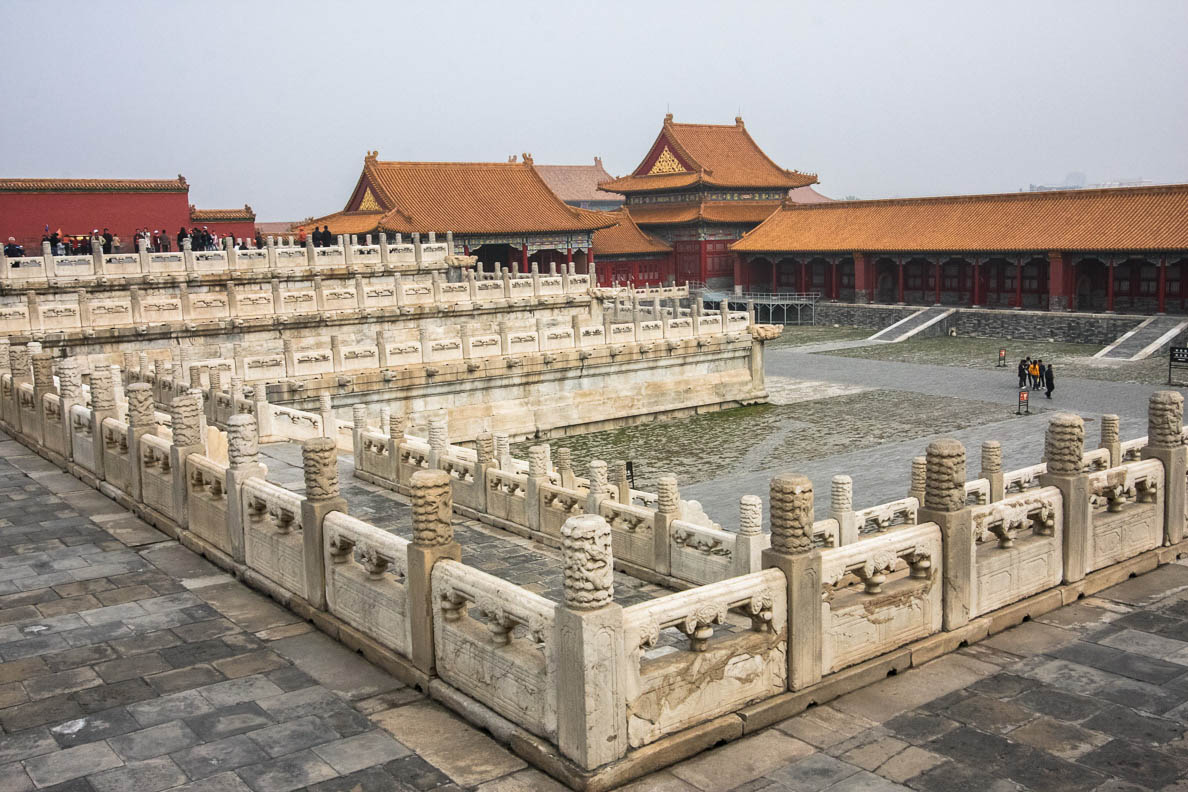
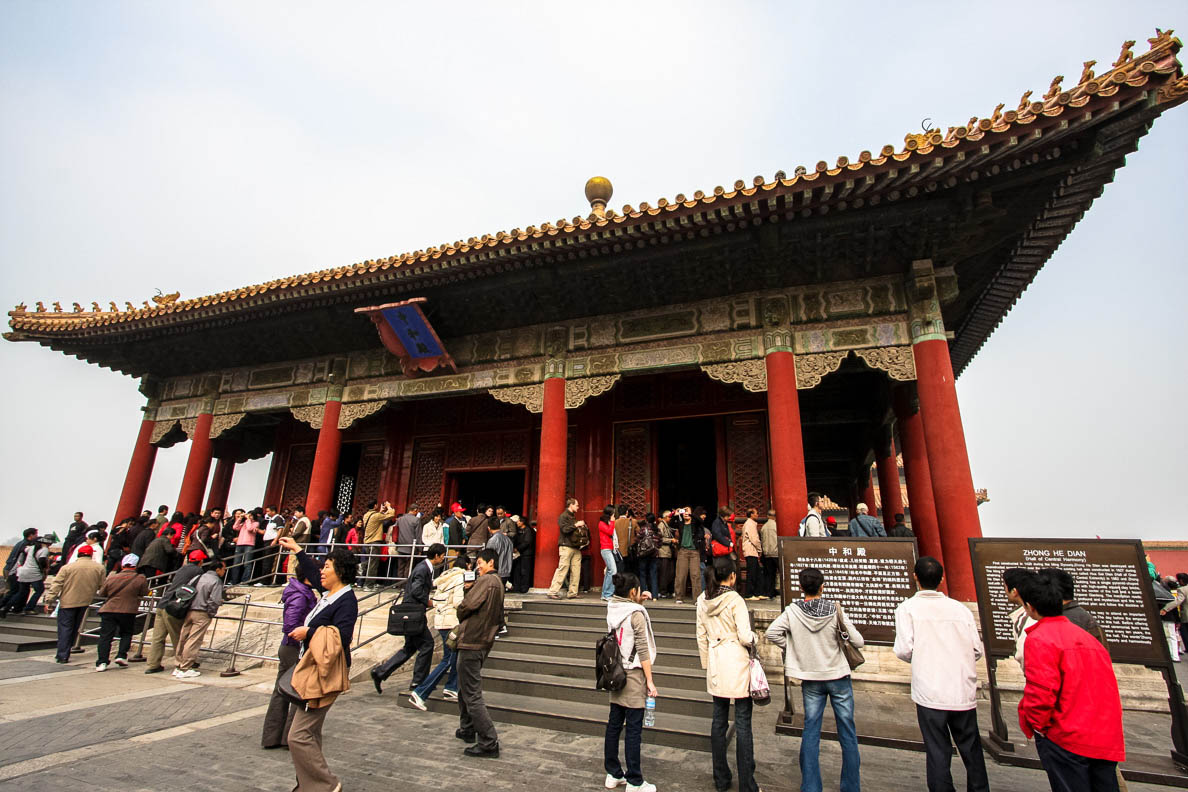
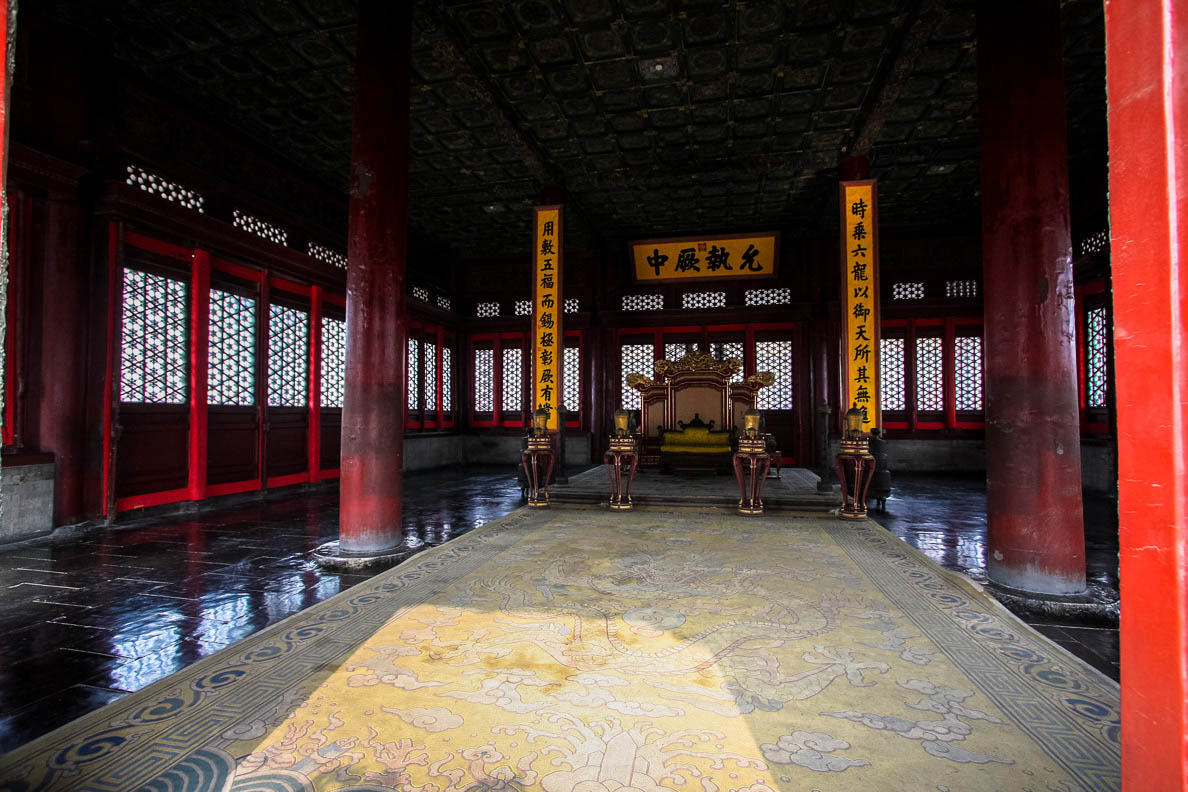
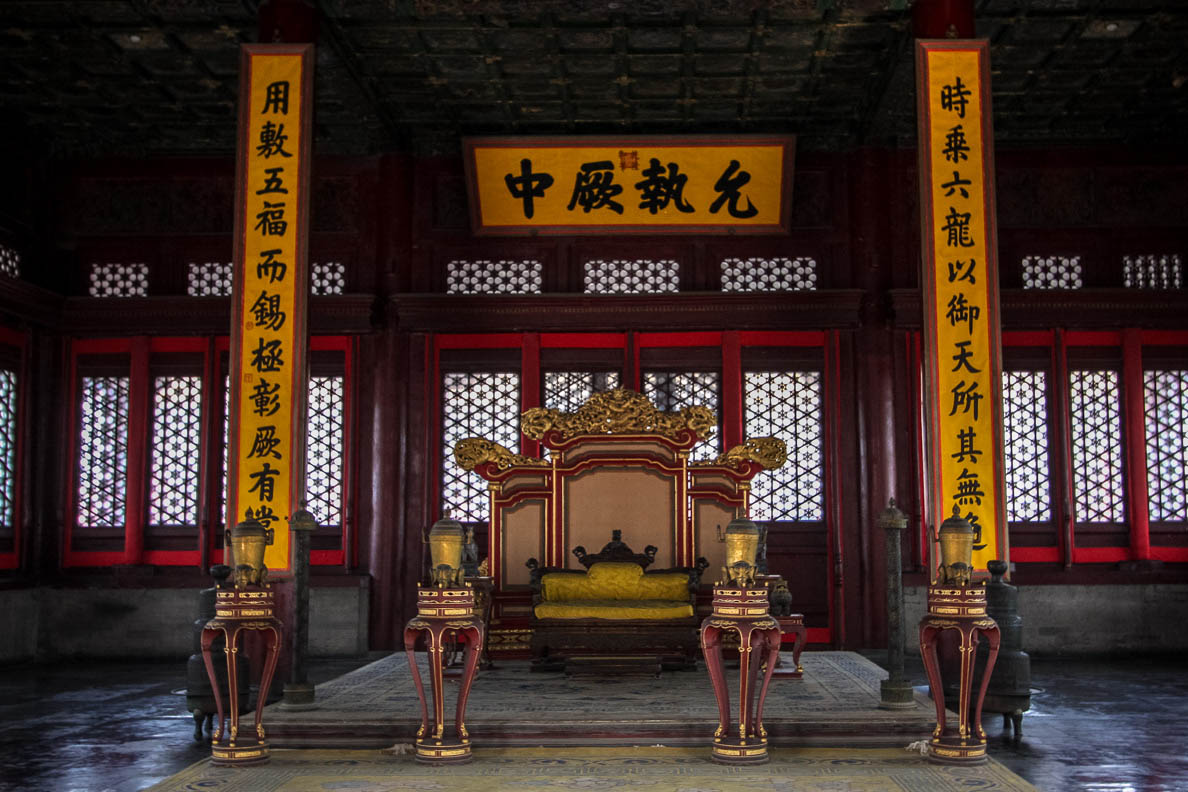
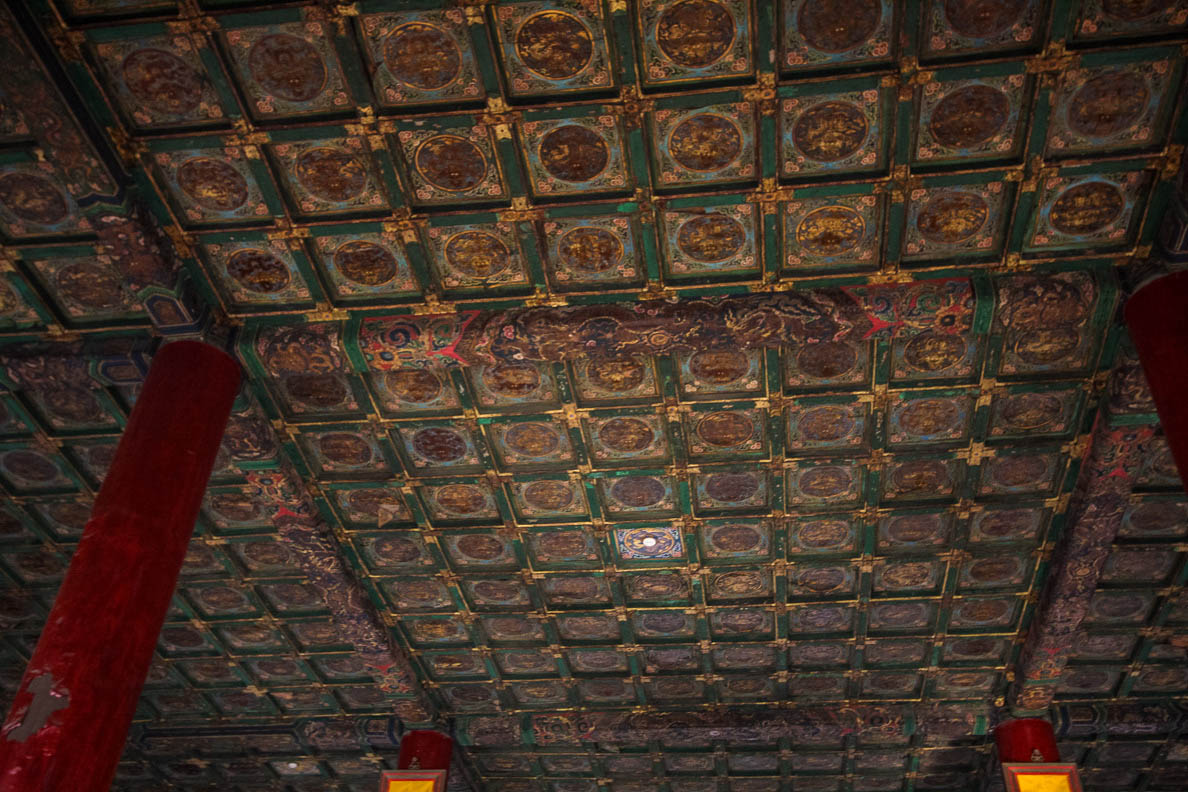
Hall of Preserving Harmony
保和殿
The third hall we walked to was similar in look to the Hall of Supreme Harmony, but smaller. Again another throne set on a raised platform with incense burners. Here the Emperor would receive representatives of minority nationalities and civil servants. Behind this hall was a long dragon pavement stone.
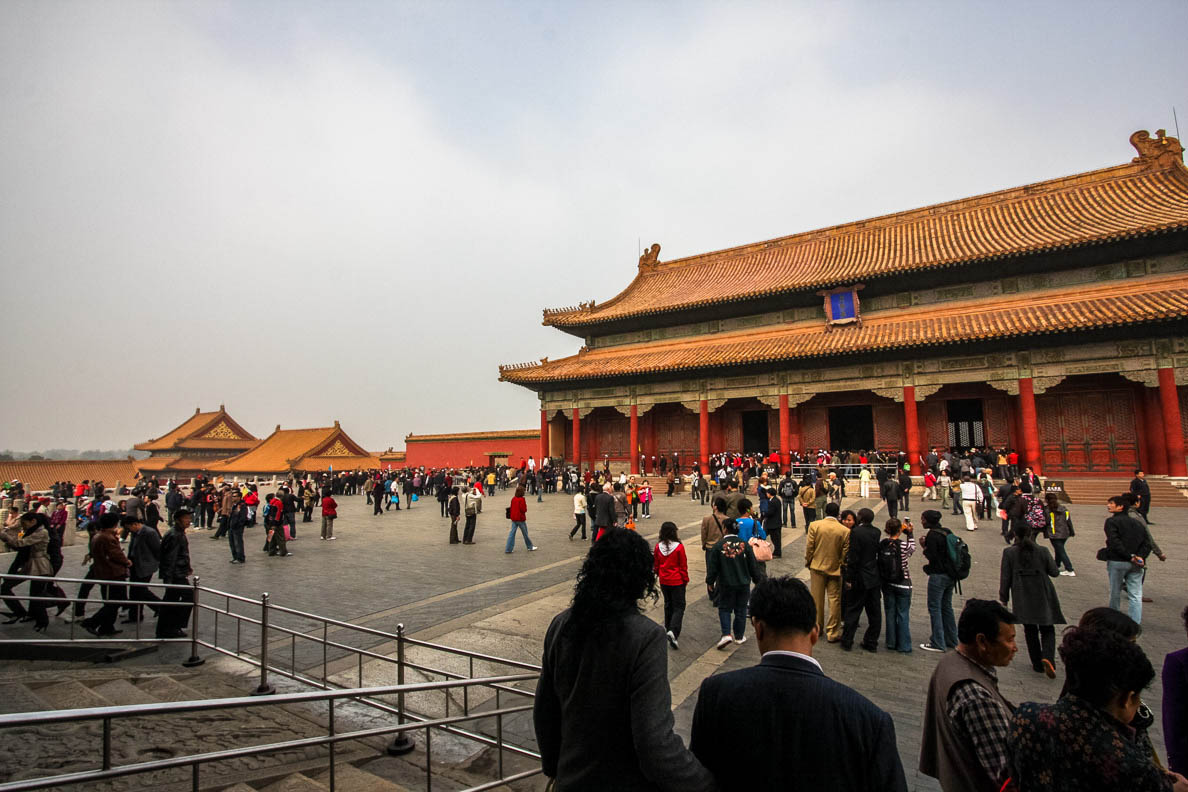
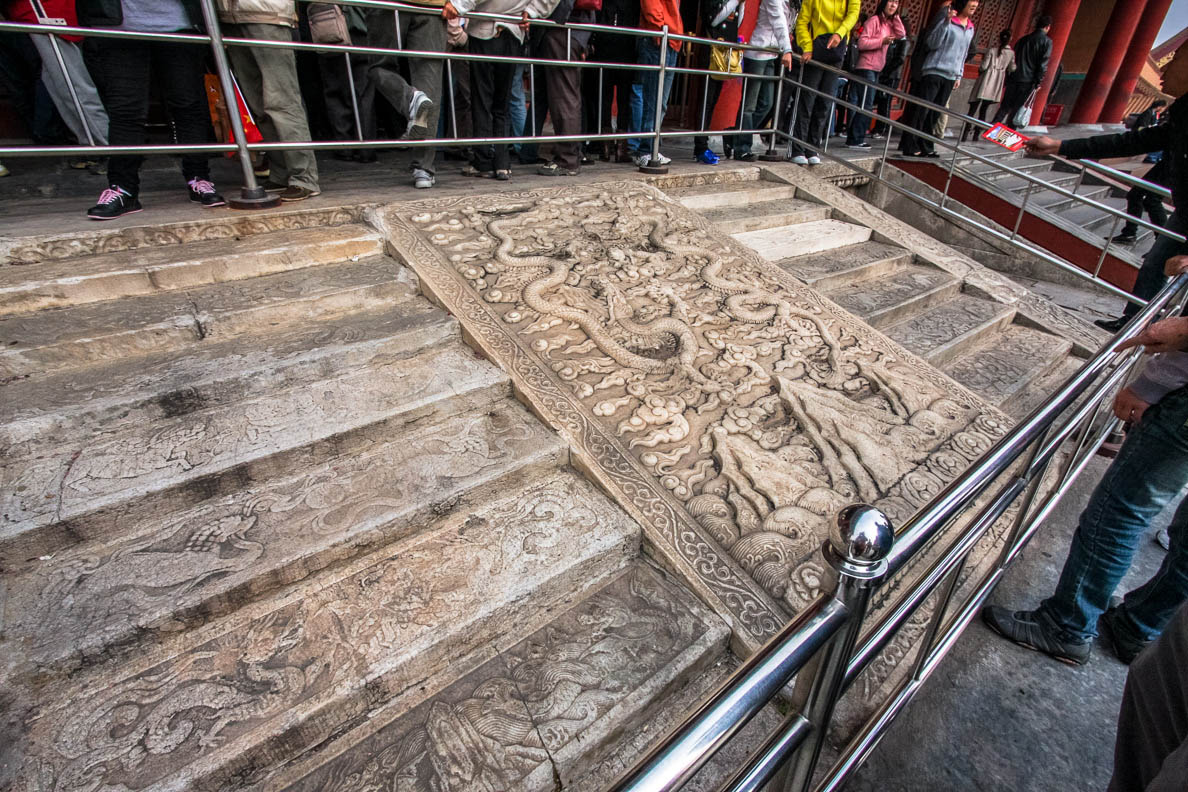
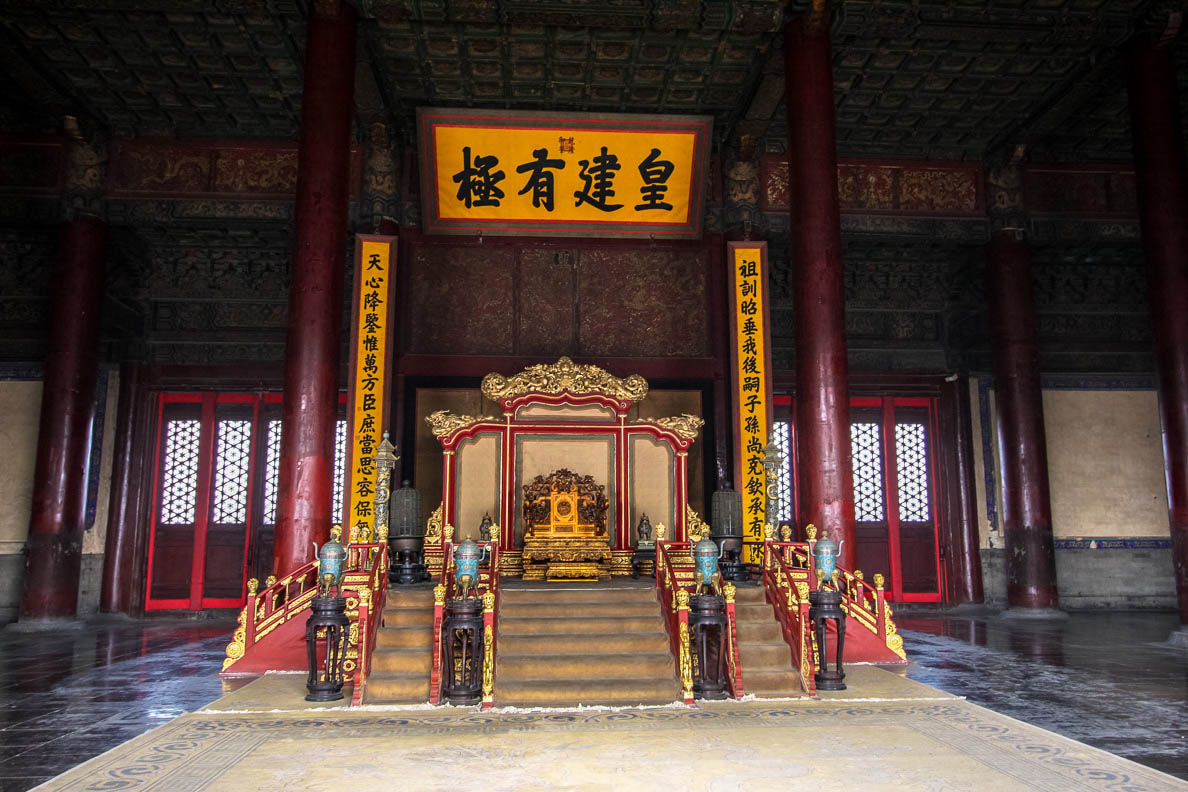
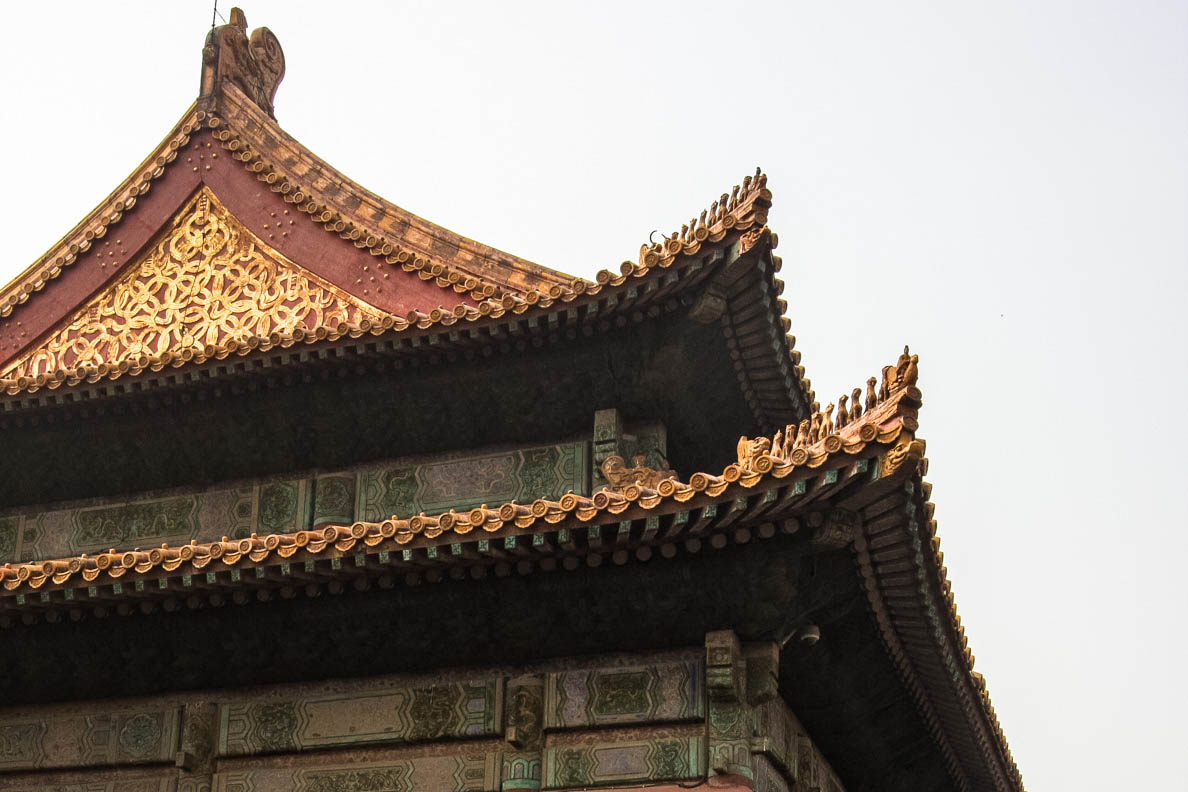

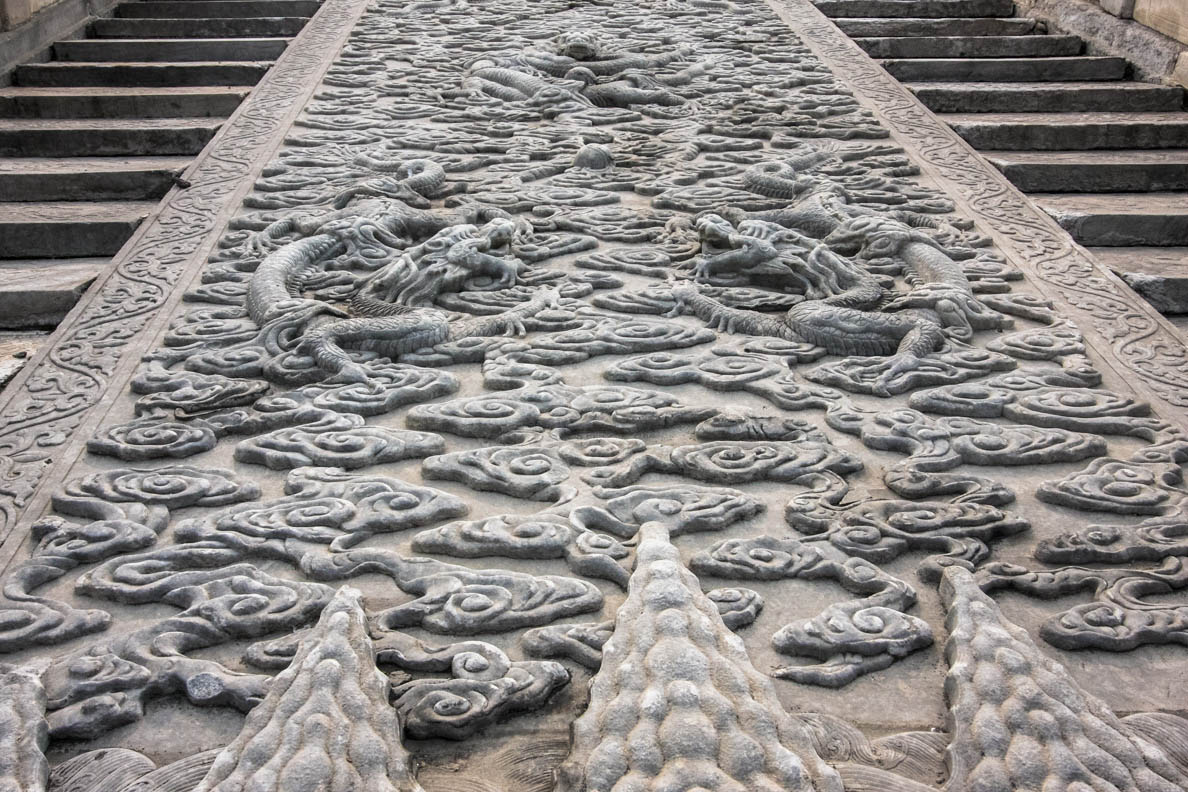
Palace of Heavenly Purity
乾清宫
We continued our walk in a straight line to the Inner court area of the Forbidden City. This area was the living quarters of the Emperor and his family. The first building you come to after passing the gate Heavenly Purity, is the Palace of Heavenly Purity 乾清宫.
Starting to a get a sense of Déjà vu as the Palace is very similar again to the Hall of Supreme Harmony, but smaller. A throne on a raised platform is at the center of the hall with the saying “Justice and Honor” above.

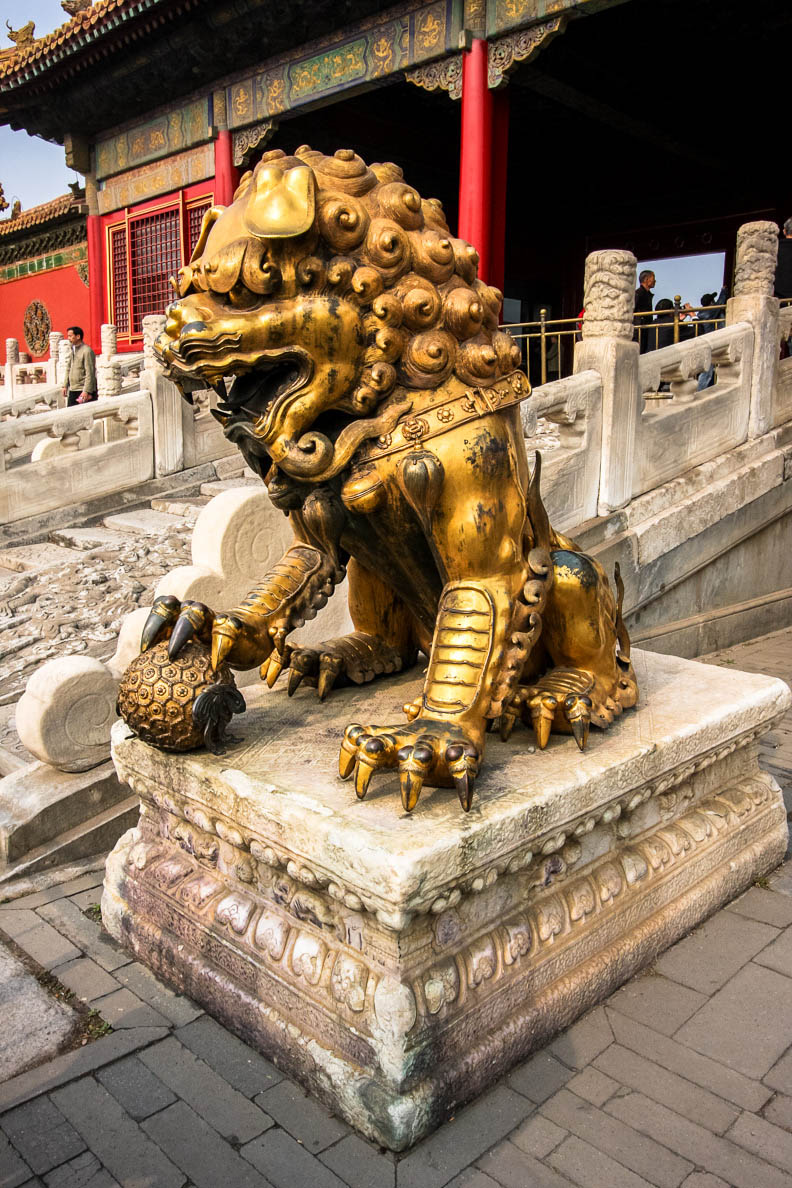
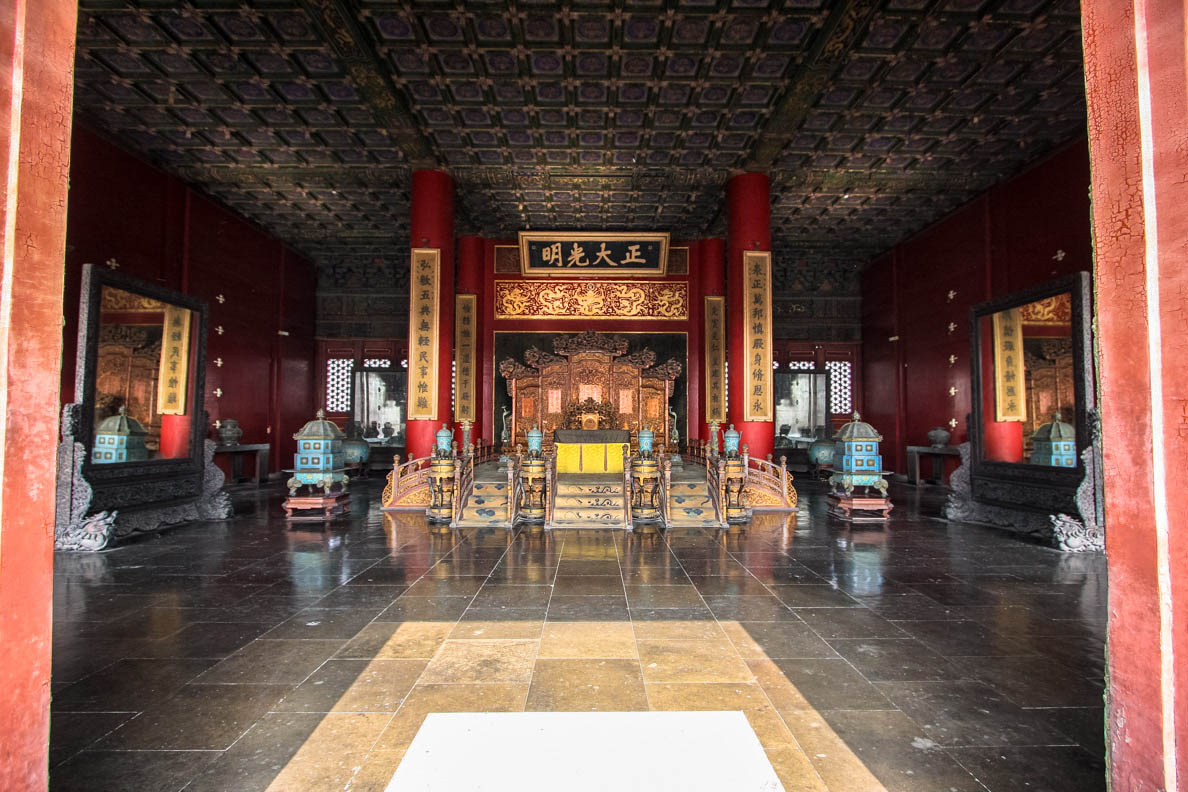
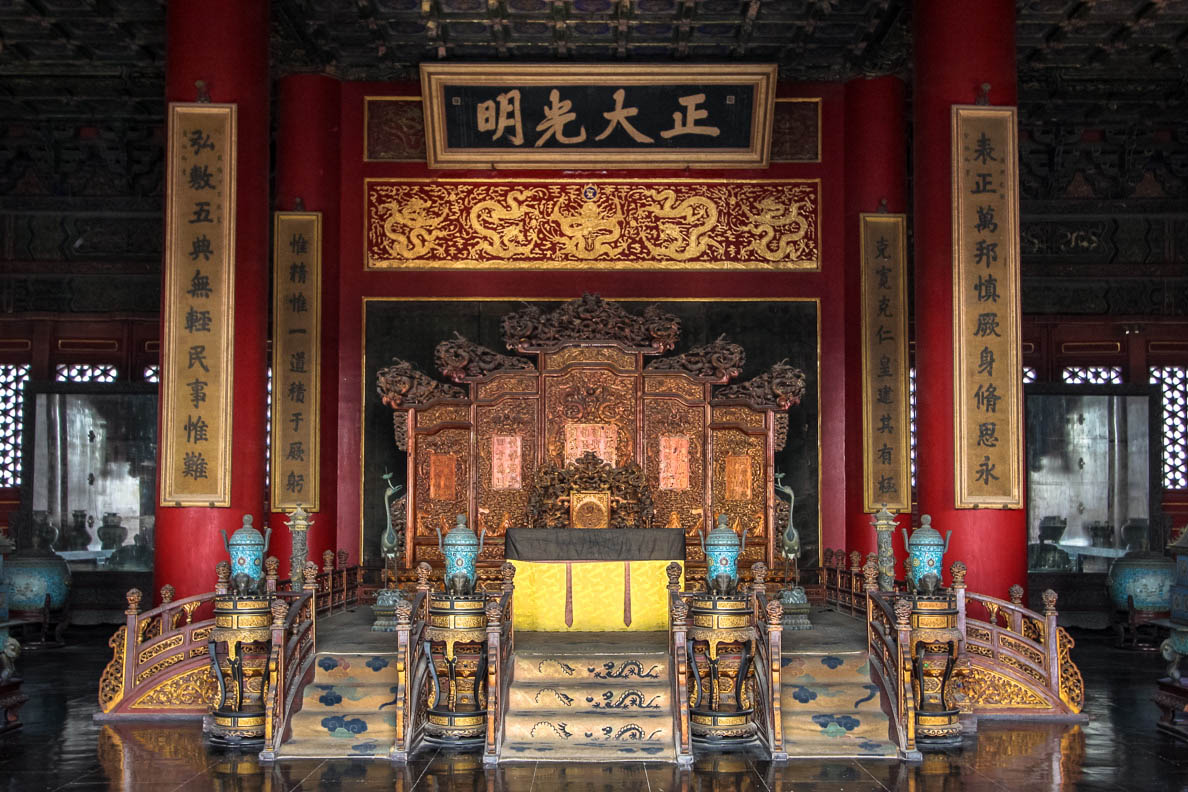
Did you know...
Pu Yi 溥儀 was 2 years old when he became the last Emperor of China and the twelfth and final ruler of the Qing Dynasty. He was ruler for only four years between 1908 to 1912, before he was forced to give up the Throne after the Chinese Revolution.
